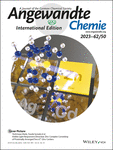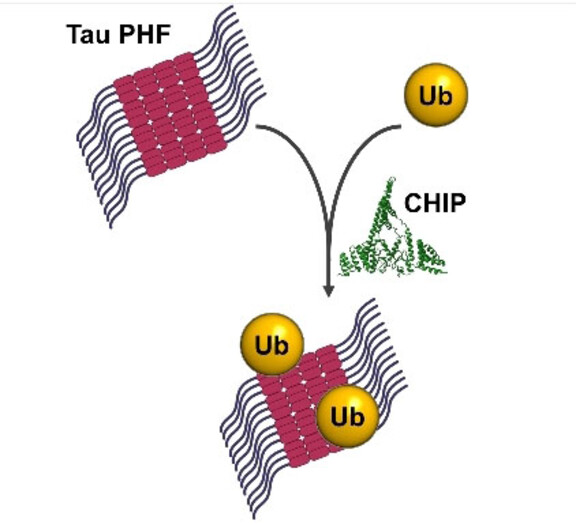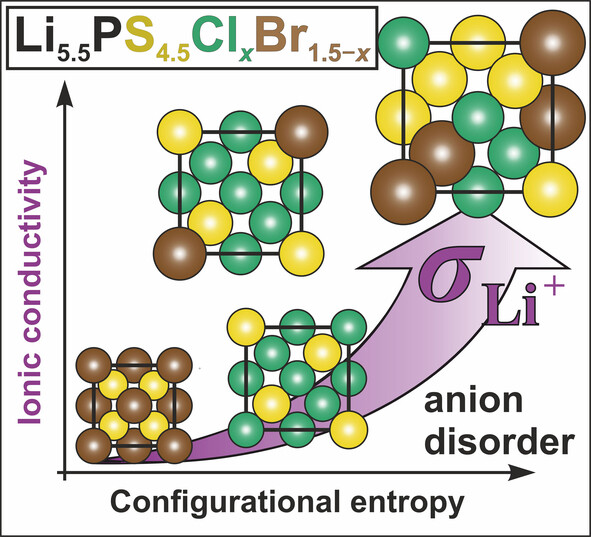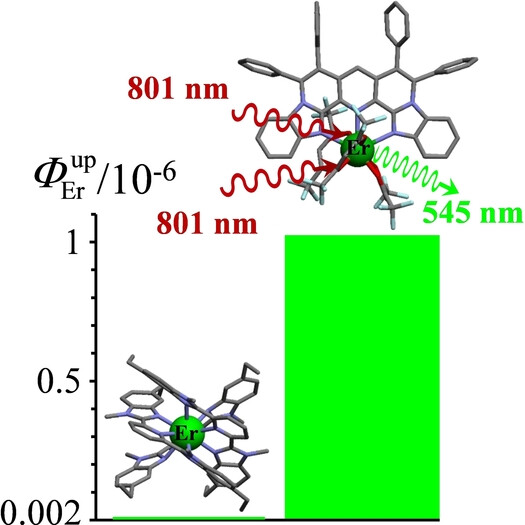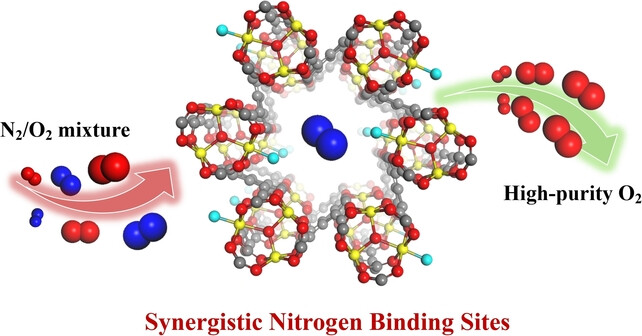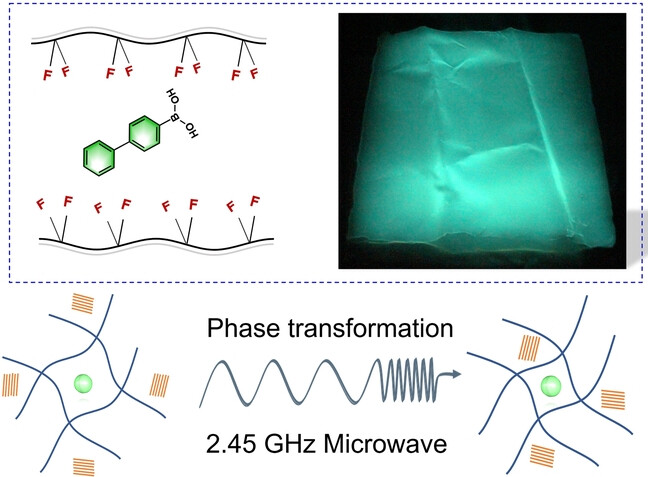Journal list menu
Export Citations
Download PDFs
Covers
Cover Picture: Visible Light Responsive Dinuclear Zinc Complex Consisting of Proximally Arranged Two d10-Zinc Centers (Angew. Chem. Int. Ed. 50/2023)
- First Published: 06 December 2023
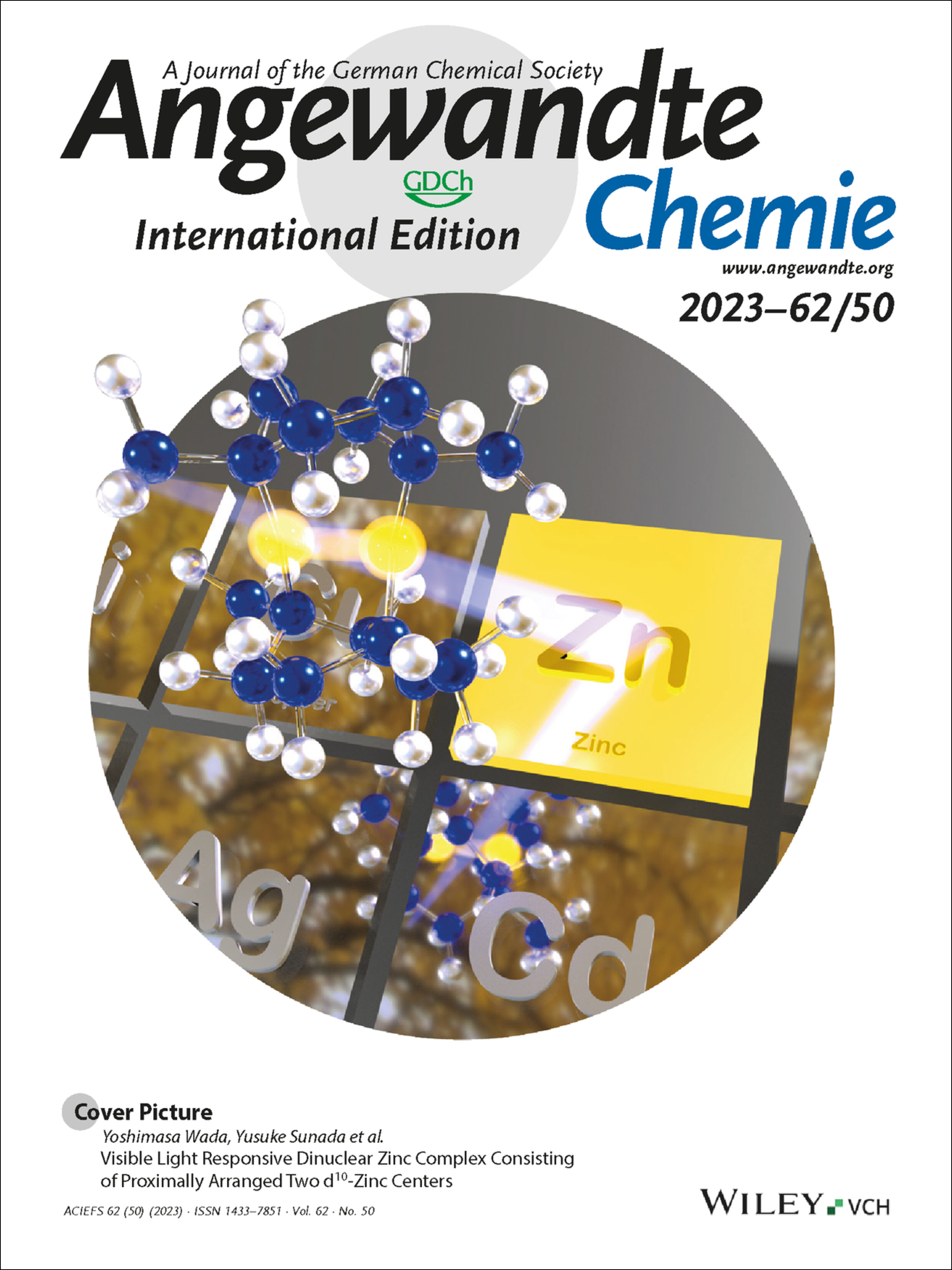
Zinc is commonly known to provide colorless complexes. A yellow colored dinuclear zinc(II) complex showing visible light absorption has now been unveiled by Yoshimasa Wada, Yusuke Sunada, and co-workers in their Communication (e202310571). The introduced Zn–Zn orbital interaction, stemming from the two coordinatively unsaturated zinc(II) centers in close proximity, enables the complex to achieve visible light absorption.
Inside Cover: Stabilization and Binding of [V4O12]4− and Unprecedented [V20O54(NO3)]n− to Lysozyme upon Loss of Ligands and Oxidation of the Potential Drug VIVO(acetylacetonato)2 (Angew. Chem. Int. Ed. 50/2023)
- First Published: 06 December 2023
![Inside Cover: Stabilization and Binding of [V4O12]4− and Unprecedented [V20O54(NO3)]n− to Lysozyme upon Loss of Ligands and Oxidation of the Potential Drug VIVO(acetylacetonato)2 (Angew. Chem. Int. Ed. 50/2023) Volume 62 Issue 50, 2023](/cms/asset/7d038d91-cbd6-4d24-8572-d6bca15900d1/anie202315577-toc-0001-m.jpg)
The crystal structures of two adducts formed by the promising anti-diabetic and anti-cancer drug VIVO(acetylacetonato)2 with lysozyme are reported by Eugenio Garribba, Antonello Merlino et al. in their Communication (e202310655). Data show that the V compound undergoes ligand exchange, partial or complete oxidation of VIV to VV to form two polyoxidovanadates: [V4O12]4−, which interacts with the protein non-covalently, and the unprecedented [V20O54(NO3)]n−,which is covalently bound to Asp side chains of symmetry-related molecules.
Inside Back Cover: Nanosheet-Assembled Zirconium-Porphyrin Frameworks Enabling Surface-Confined, Initiator-Free Photosynthesis of Ultrahigh Molecular Weight Polymers (Angew. Chem. Int. Ed. 50/2023)
- First Published: 27 October 2023
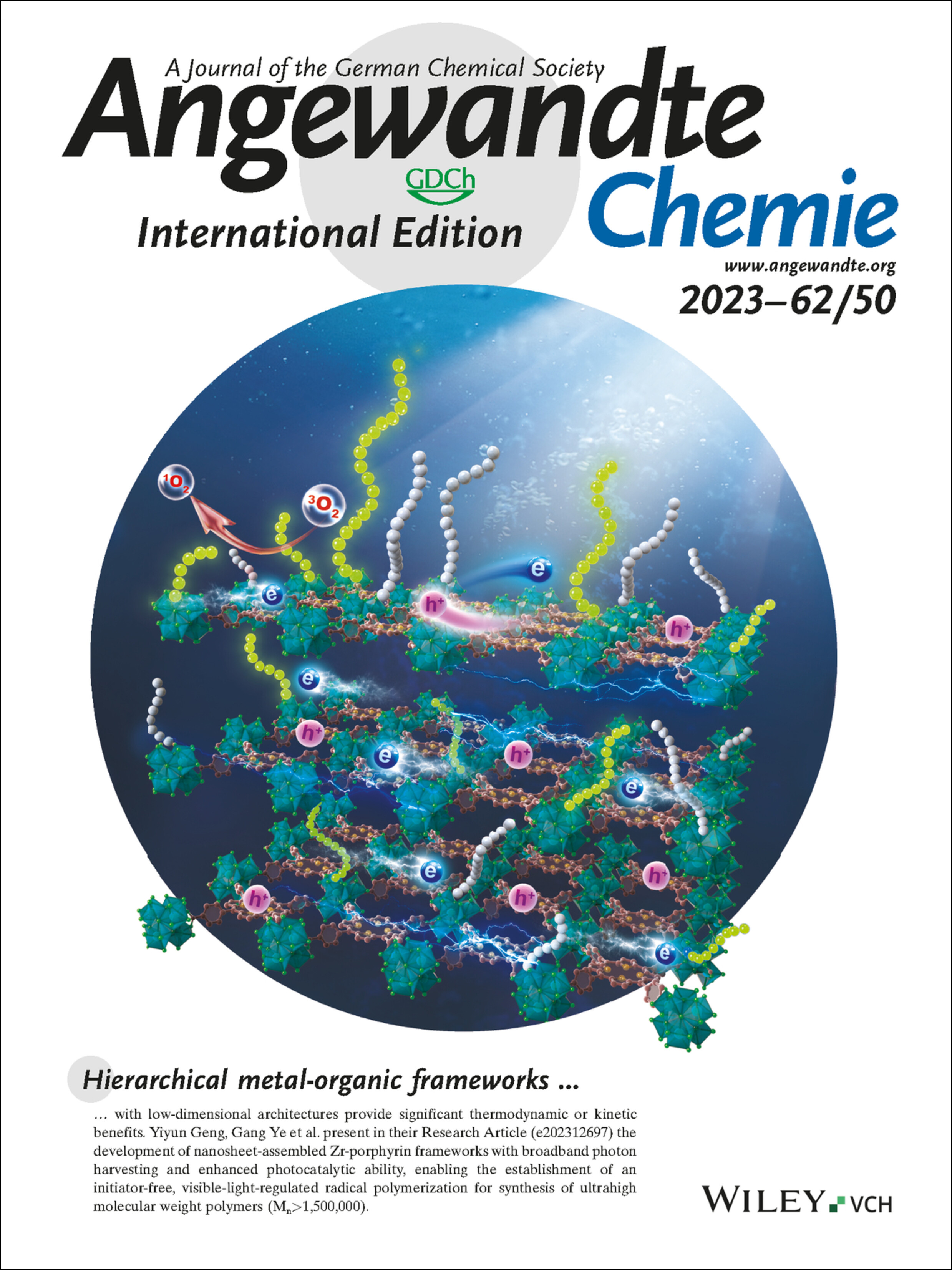
Hierarchical metal-organic frameworks with low-dimensional architectures provide significant thermodynamic or kinetic benefits. Yiyun Geng, Gang Ye et al. present in their Research Article (e202312697) the development of nanosheet-assembled Zr-porphyrin frameworks with broadband photon harvesting and enhanced photocatalytic ability, enabling the establishment of an initiator-free, visible-light-regulated radical polymerization for synthesis of ultrahigh molecular weight polymers (Mn>1,500,000).
Back Cover: Mixed-Valence CuI/CuIII Metal–Organic Frameworks with Non-innocent Ligand for Multielectron Transfer (Angew. Chem. Int. Ed. 50/2023)
- First Published: 06 December 2023
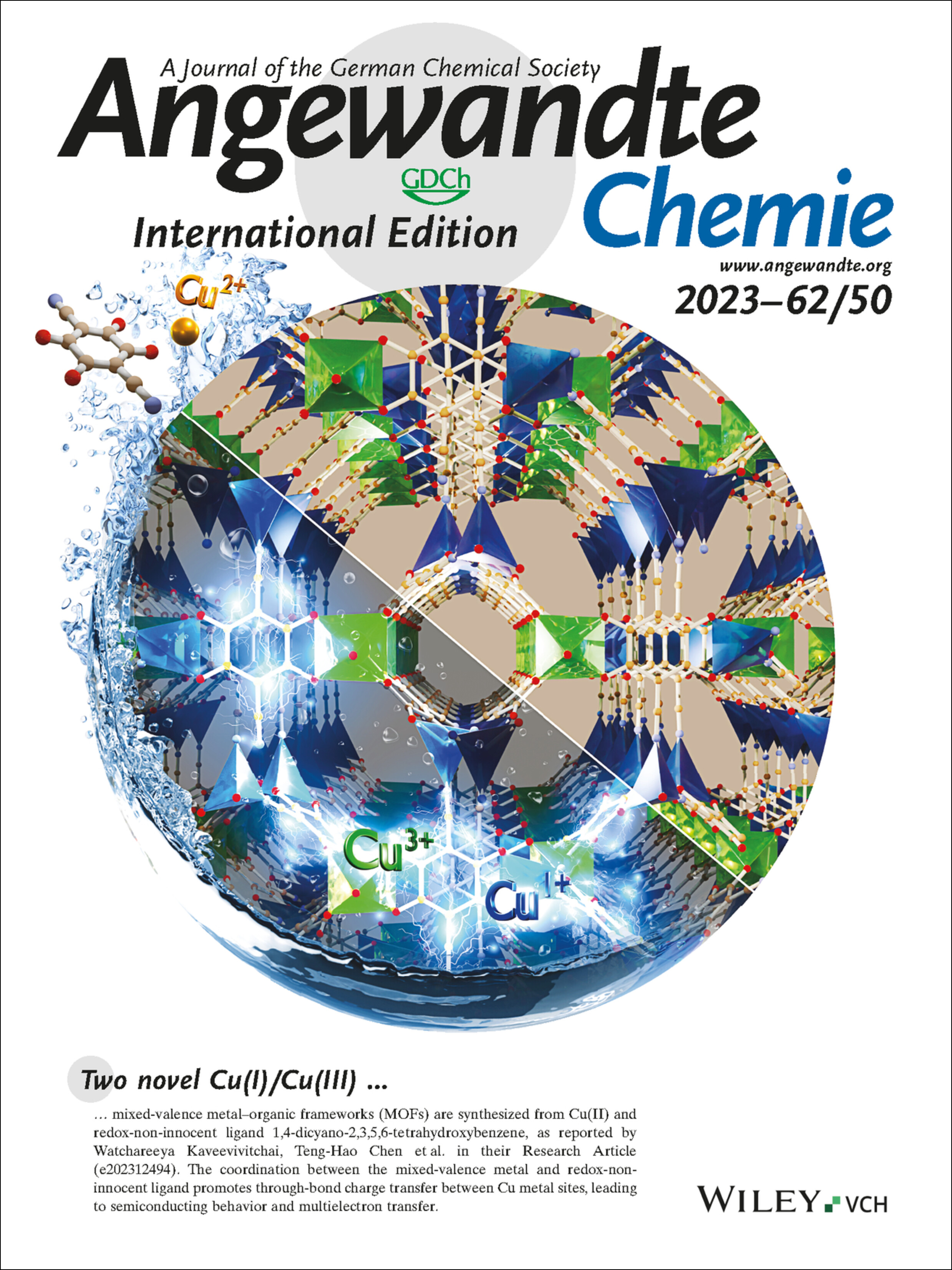
Two novel Cu(I)/Cu(III) mixed-valence metal–organic frameworks (MOFs) are synthesized from Cu(II) and redox-non-innocent ligand 1,4-dicyano-2,3,5,6-tetrahydroxybenzene, as reported by Watchareeya Kaveevivitchai, Teng-Hao Chen et al. in their Research Article (e202312494). The coordination between the mixed-valence metal and redox-non-innocent ligand promotes through-bond charge transfer between Cu metal sites, leading to semiconducting behavior and multielectron transfer.
Frontispiece
Frontispiece: S-Block Potassium Single-atom Electrocatalyst with K−N4 Configuration Derived from K+/Polydopamine for Efficient Oxygen Reduction
- First Published: 06 December 2023
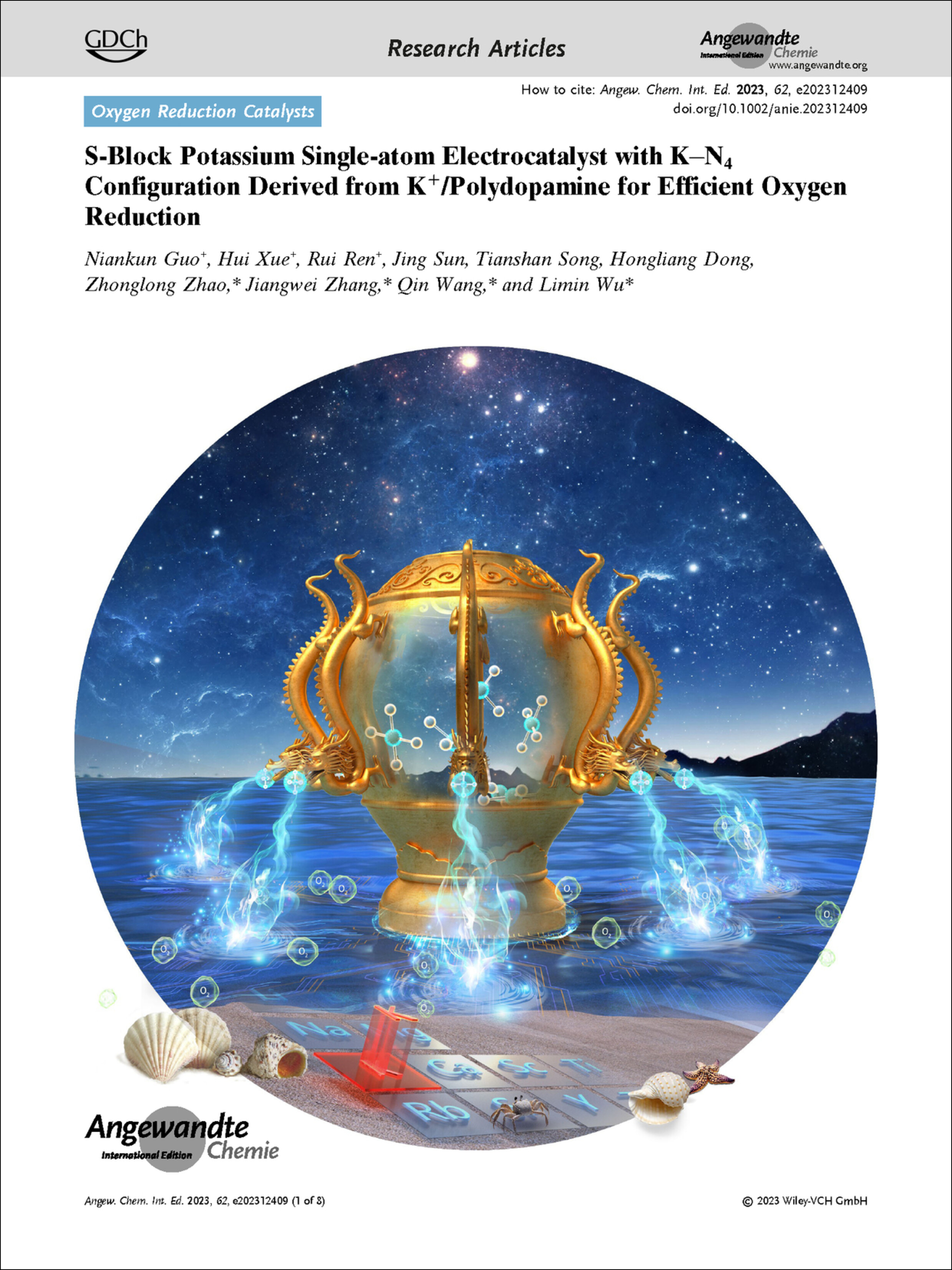
Electrocatalysis. An s-block potassium single-atom electrocatalyst with K-N4 configuration derived from K+/polydopamine for efficient oxygen reduction is reported in the Research Article by Zhonglong Zhao, Jiangwei Zhang, Qin Wang, Limin Wu et al. (e202312409).
Graphical Abstract
Graphical Abstract: Angew. Chem. Int. Ed. 50/2023
- First Published: 06 December 2023
Announcement
Classifieds: Jobs and Awards, Products and Services
- First Published: 06 December 2023
Team Profile
A Collaboration to Create Functional Frameworks from Multiple Components
- First Published: 13 October 2023

“Scientific exchange between Salonen and Medina nucleated several years ago during their postdoctoral time in Munich working on covalently connected framework materials… Sharing the excitement about science has been key to maintaining a functional long-term collaboration using only online methods…” Find out more about collaboration to create functional frameworks from multiple components.
Introducing …
Minireviews
Nanomedicine
Nanomedicine-Enabled Chemical Regulation of Reactive X Species for Versatile Disease Treatments
- First Published: 31 August 2023

This minireview provides a summary of the chemistry and mechanisms governing reactive species (RXS) based nanomedicine, focusing on metabolic regulation, the role of nanomedicine in RXS generation and elimination. The challenges and future prospects associated with RXS for disease treatments are further discussed, aiming to facilitate the clinical translation of RXS-based nanomedicine and open new avenues for improved therapeutic interventions.
Electrochemistry
Comprehensive Comparisons between Directing and Alternating Current Electrolysis in Organic Synthesis
- First Published: 22 August 2023
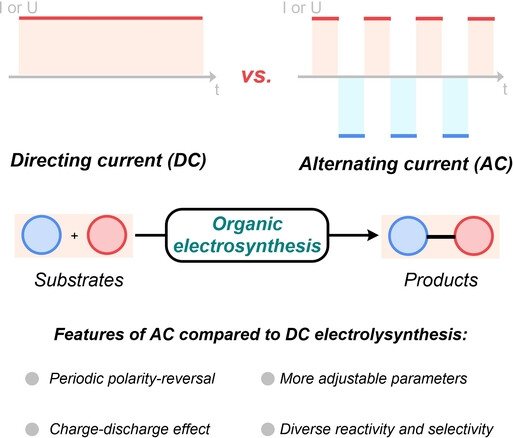
In contrast to DC electrolysis, alternating current (AC) features polarity reversal and periodic variation, and will provide more chances and potentials for organic synthesis. This minireview delineates the unfolding landscape of recent progress in AC-driven organic transformations and endeavors to dissect disparities between DC and AC electrolytic patterns from their physical principles, reaction features and selectivity control.
Antibacterial Agents
Harnessing Transition Metal Scaffolds for Targeted Antibacterial Therapy
- First Published: 25 August 2023
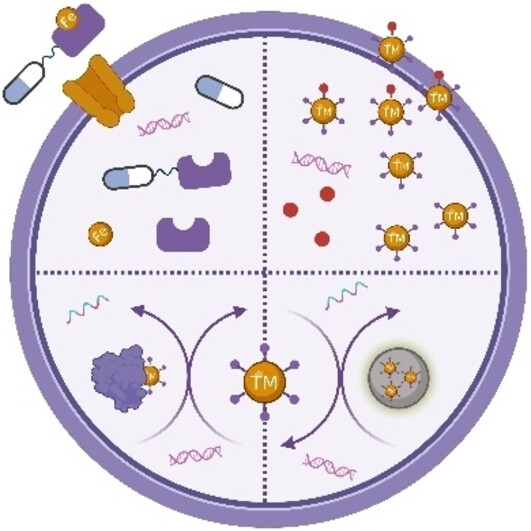
Antimicrobial resistance is one of the most serious threats to public health but the problem is compounded by the lack of new drugs with new modes of action in the development pipeline. In this review, we spotlight four emerging antibacterial strategies that take advantages of the unique chemical properties of transition metal complexes, namely Trojan horse, triggered warhead release, “new-to-nature” chemistry, and biomimetic reactions. We further propose that transition metal complexes can replenish this diminishing stockpile of drug candidates by providing compounds with unique properties that are not easily accessible using pure organic scaffolds.
Reviews
Organic Electrodes
Polyimide Compounds For Post-Lithium Energy Storage Applications
- First Published: 31 August 2023
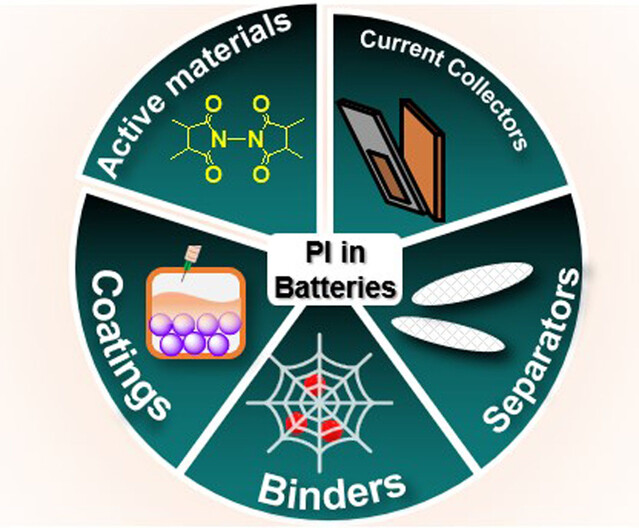
Polyimides have proven to be highly versatile in nearly all areas of rechargeable battery applications, spanning from active electrode materials to separator coatings. This review presents a summary of significant research conducted over the past 15 years, showcasing their potential to pave the way for a new era of effective utilization of these polymers in next-generation batteries.
Photochemistry
Catalytic Photochemical Deracemization via Short-Lived Intermediates
- First Published: 10 July 2023

Photochemical deracemization offers a unique opportunity to directly obtain enantiopure compounds from their racemates. Short-lived intermediates play a key role in the enantioselectivity-determining step. The review covers comprehensively the research performed in the area and discusses current developments.
Research Articles
Oxygen Reduction Catalysts
S-Block Potassium Single-atom Electrocatalyst with K−N4 Configuration Derived from K+/Polydopamine for Efficient Oxygen Reduction
- First Published: 08 September 2023
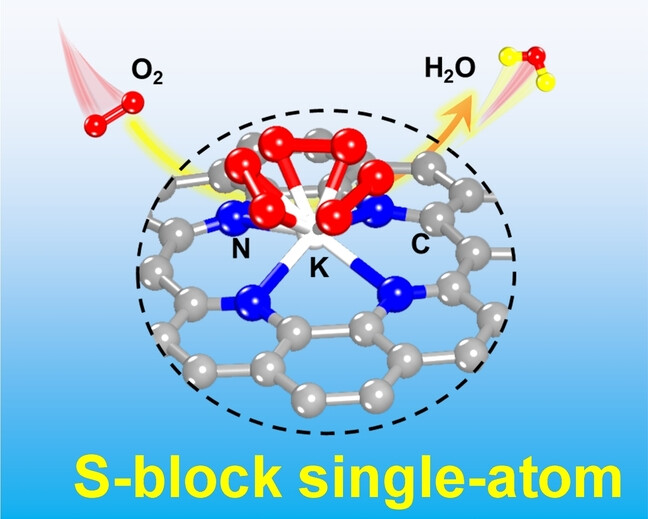
An s-block Potassium single-atom catalyst (SAC) with a K-N4 configuration was prepared and used as a highly efficient oxygen reduction reaction (ORR) electrocatalyst. The excellent ORR activity is attributed to K/C atoms acting as dual adsorption sites, which can synergistically optimize the free energy of oxygen-containing intermediates and tune the rate-determining step.
Therapy | Very Important Paper
Metal-DNA Nanocomplexes Enhance Chemo-dynamic Therapy by Inhibiting Autophagy-Mediated Resistance
- First Published: 03 November 2023
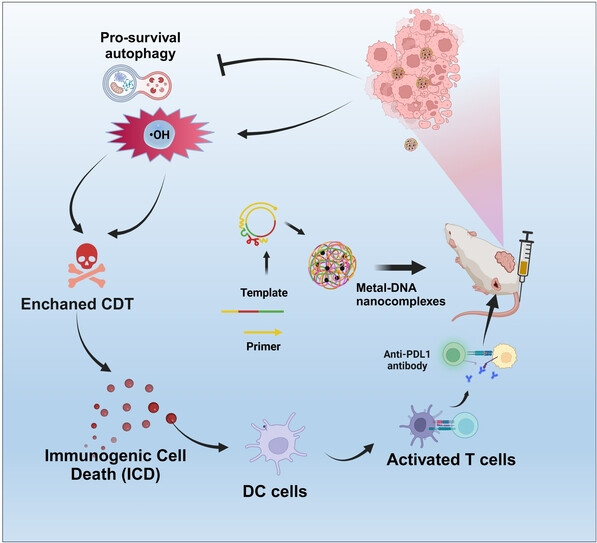
By integrating multivalent nucleic acid aptamers and DNAzyme sequences into long single-stranded DNA and further forming metal-DNA nanocomplexes using rolling circle amplification (RCA) technology, researchers have successfully established a DNA drug delivery platform that combined chemo-dynamic therapy (CDT) and autophagy inhibition therapies. The platform overcame the shortcomings of short-stranded DNA, such as poor stability under physiological conditions, short blood circulation time, and easy clearance by the organism.
Conductive MOFs | Hot Paper
Dominant Role of Hole Transport Pathway in Achieving Record High Photoconductivity in Two-Dimensional Metal–Organic Frameworks
- First Published: 23 October 2023
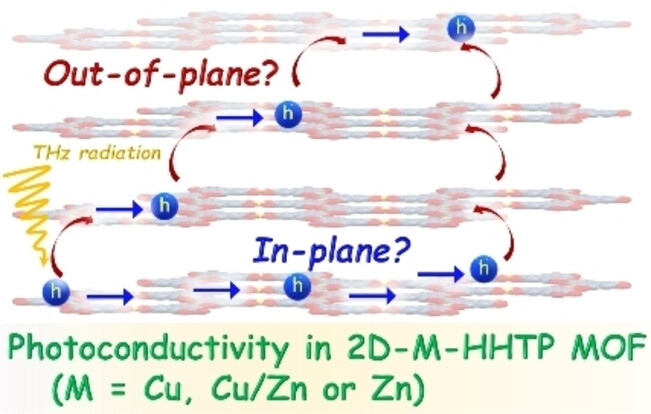
The mechanisms of photoinduced charge transport and electron dynamics in conductive 2D metal–organic frameworks (MOFs) and their correlation with photoconductivity are investigated using multiple spectroscopy techniques. A through-space hole transport mechanism through the interlayer sheet π–π interaction is identified, where the photoinduced hole state resides in the HHTP ligand and the electronic state is localized at the metal center.
Amyloids
Site-Specific Ubiquitination of Tau Amyloids Promoted by the E3 Ligase CHIP
- First Published: 25 October 2023
Renewable Polymers | Very Important Paper
Biodegradable Dual-Network Cellulosic Composite Bioplastic Metafilm for Plastic Substitute
- First Published: 29 October 2023
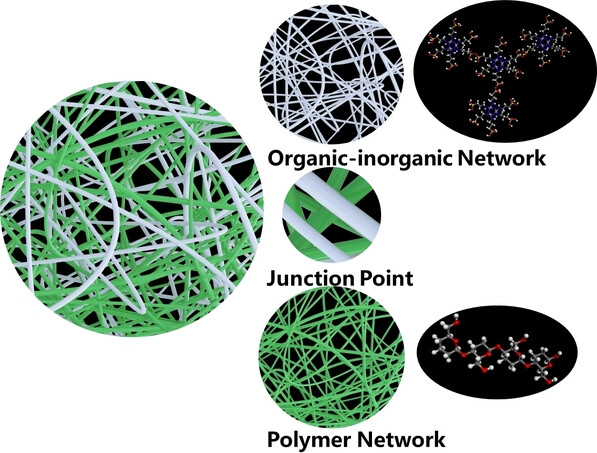
The novel dual-network design strategy is proposed to prepare a high-performance cellulosic composite bioplastic metafilm with exceptional mechanical toughness (23.5 MJ m−3), flame retardance, and solvent resistance. Moreover, it has a high maximum usage temperature (245 °C), lower thermal expansion coefficient (15.19 ppm °C−1), good biocompatibility, and natural biodegradation, which is competitive for plastic substitute.
Photocatalysis
Tweaking Photo CO2 Reduction by Altering Lewis Acidic Sites in Metalated-Porous Organic Polymer for Adjustable H2/CO Ratio in Syngas Production
- First Published: 23 October 2023
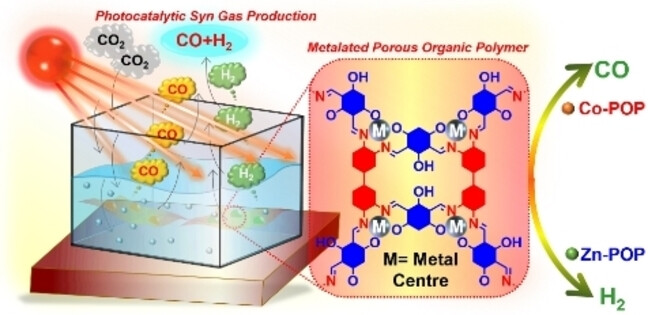
Zn and Co based POP with different Lewis acidity has been developed for controlling water splitting and CO2 reduction under sunlight. Low-cost option of syngas production with adjustable H2/CO ratio was demonstrated obtained by skipping the use of any sacrificial electron donors (SEDs), cocatalysts, or photo-sensitizers.
H-bonded Organic Frameworks
Ortho-Alkoxy-benzamide Directed Formation of a Single Crystalline Hydrogen-bonded Crosslinked Organic Framework and Its Boron Trifluoride Uptake and Catalysis
- First Published: 23 October 2023

A single-crystalline ortho-alkoxy-benzamide directed hydrogen-bonded crosslinked organic framework (HCOF-50) has been synthesized for BF3 adsorption and demonstrates a record-high capacity of 14.2 mmol/g. The formed HCOF-50 ⋅ BF3 complex showed controlled BF3-releasing for more controlled cationic vinyl ether polymerization.
Catalysis
Photoenzymatic Enantioselective Synthesis of Oxygen-Containing Benzo-Fused Heterocycles
- First Published: 29 October 2023

Combining photocatalysis and biocatalysis allows for the repurposing of the ‘ene’-reductase enzyme GluER to achieve the enantioselective synthesis of benzo-fused heterocycles, and various benzoxepinones, chromanone and indanone were specifically afforded in high yields with good to excellent enantioselectivities after protein engineering of GluER.
Mixed-Valence MOFs | Hot Paper
Mixed-Valence CuI/CuIII Metal–Organic Frameworks with Non-innocent Ligand for Multielectron Transfer
- First Published: 13 September 2023
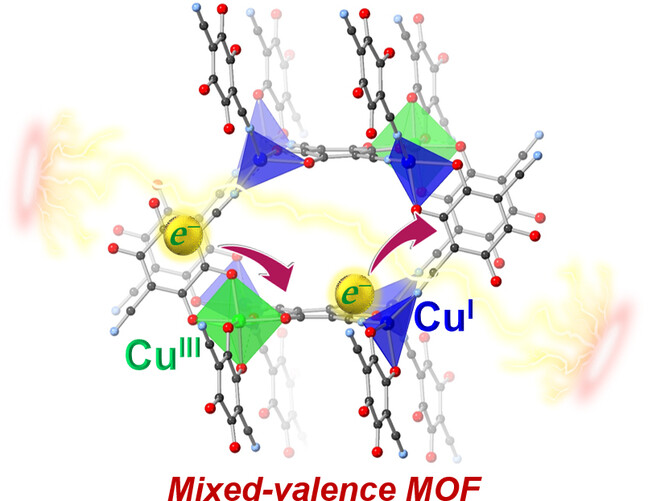
The first metal–organic frameworks with formally Cu(I)/Cu(III) mixed valency are reported. These bench stable Cu(III)-containing frameworks coordinated by a non-innocent ligand are characterized and investigated for multielectron redox properties, unveiling the redox-active sites at both the copper and organic ligand. This is also the first time that formally Cu(III) species are witnessed in metal–organic extended solids.
Catenanes
Unravelling the Roles of Solvophobic Effects and π⋅⋅⋅π Stacking Interactions in the Formation of [2]Catenanes Featuring Di-(N-Heterocyclic Carbene) Building Blocks
- First Published: 11 October 2023
![Unravelling the Roles of Solvophobic Effects and π⋅⋅⋅π Stacking Interactions in the Formation of [2]Catenanes Featuring Di-(N-Heterocyclic Carbene) Building Blocks](/cms/asset/8945c3e2-a4d5-467e-bf2e-2fc80851fae0/anie202312323-toc-0001-m.jpg)
Different effects have been shown to control the formation of [2]catenanes with different bridges between pyridine donors. The formation of [2-IL](OTf)4 is aided by solvophobic effects and [3-IL](OTf)4 is stabilized by solvophobic effects and π⋅⋅⋅π stacking. The π⋅⋅⋅π stacking between the pyrene groups is essential for the formation of [4-IL](PF6)4 and [5-IL](PF6)4, where the enhanced stability of [5-IL](PF6)4 is based on the more stable Au−CNHC bonds.
Heterogeneous Catalysis | Hot Paper
Rapid Polyolefin Hydrogenolysis by a Single-Site Organo-Tantalum Catalyst on a Super-Acidic Support: Structure and Mechanism
- First Published: 10 November 2023
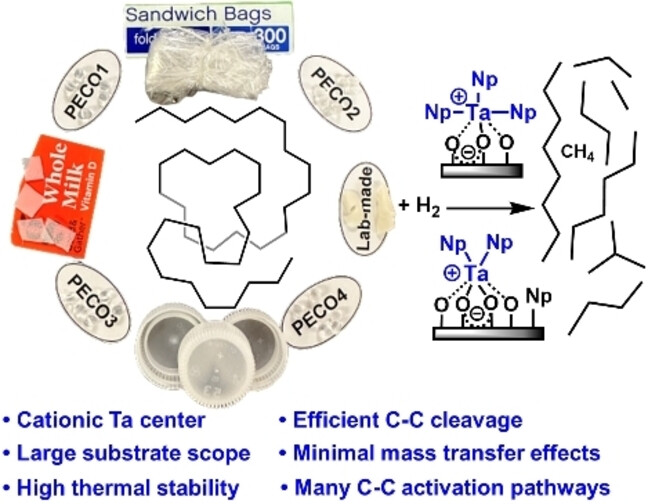
The cationic organo-tantalum catalyst AlS/TaNp3 (94 %) and AlS/TaNp2_AlNp (6 %) was synthesized via Np3Ta=CHtBu chemisorption on Brønsted acidic sulfated alumina (AlS). The proposed structures are in good agreement with SSNMR, DRIFTS, XANES, EXAFS, and DFT computation. Highly efficient AlS/Ta-mediated hydrogenolysis of diverse pre- and post-consumer polyolefin plastics to lighter alkanes is achieved.
Natural Products
Biomimetic Synthesis of an Antiviral Cinnamoylphloroglucinol Collection from Cleistocalyx operculatus: A Synthetic Strategy Based on Biogenetic Building Blocks
- First Published: 17 October 2023
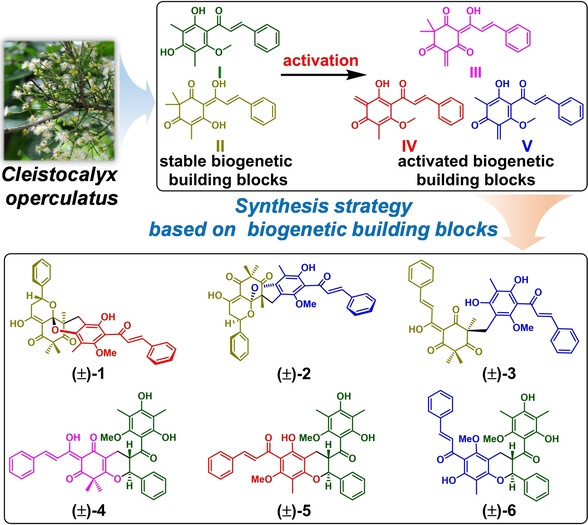
Four novel cinnamoylphloroglucinol dimers were discovered from C. operculatus. Biomimetic syntheses of these and two known dimers were developed through a strategy in which the activation of stable biogenetic building blocks was a crucial step and key features included a unique cascade reaction and a rare inverse-electron-demand Diels–Alder reaction. One of the dimers showed activity against herpes simplex virus type 1 through a new mode of action.
DNA Nanotechnology
A NIR Programmable In Vivo miRNA Magnifier for NIR-II Imaging of Early Stage Cancer
- First Published: 30 October 2023
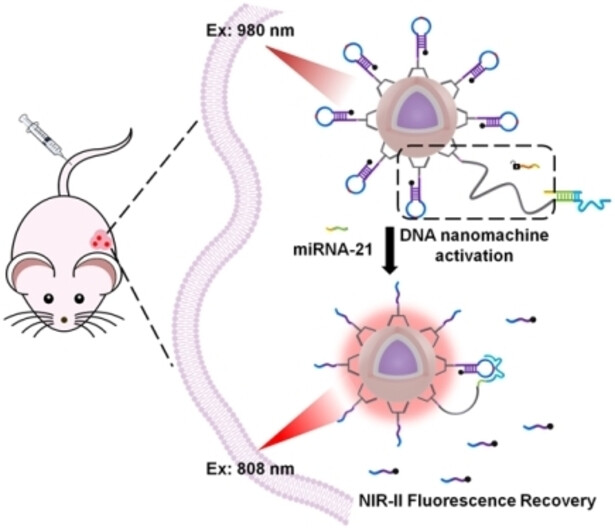
A 980/808 nm NIR programmed in vivo miRNA magnifier is developed by conjugating an activatable DNAzyme walker set to rare-earth nanoparticles, which detects tumors earlier than size-monitoring techniques. The 980-nm excitation-activated DNA nanomachine for miRNA-21 recognition and signal amplification to suppress “false positive” signals, and imaging in the NIR-II region under 808 nm excitation provided deeper penetration and lower background.
Photocatalysis | Very Important Paper
Nanosheet-Assembled Zirconium-Porphyrin Frameworks Enabling Surface-Confined, Initiator-Free Photosynthesis of Ultrahigh Molecular Weight Polymers
- First Published: 19 September 2023
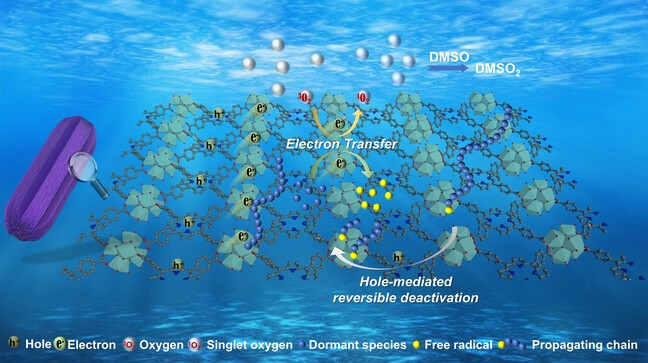
Nanosheet-assembled Zr-porphyrin hexagonal prisms exhibit broadband photon harvesting and excellent photocatalytic ability, enabling controlled photosynthesis of ultrahigh molecular weight (Mn>1,500,000) polymers with low dispersity (Đ≈1.5) in an initiator-free, oxygen-tolerant reversible-deactivation radical polymerization system regulated by full-range visible light and natural sunlight.
Nanocrystals | Very Important Paper
Surface Sites and Ligation in Amine-capped CdSe Nanocrystals
- First Published: 23 October 2023
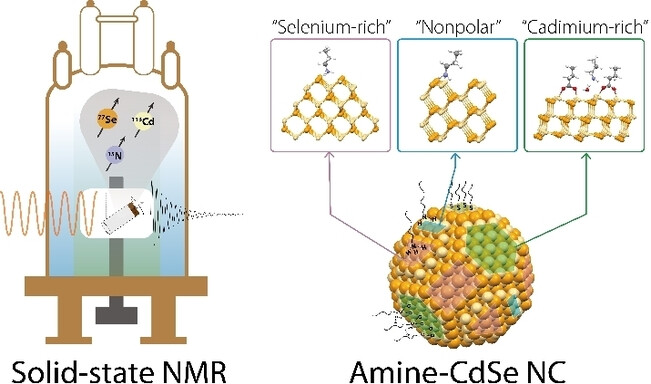
Amine ligands have been widely used to tailor surface properties of colloidal nanocrystals (NCs) for facilitating their synthesis, performances and processing, but detailed understanding of their interaction has remained a challenge. Here, a strategy based on detecting 113Cd, 77Se and 15N NMR signatures augmented with DFT modeling was developed. It enables to identify distinct surface sites and the corresponding ligation of amines in CdSe NCs.
Light-Emitting Diodes
Ligand Engineering Enables Efficient Pure Red Tin-Based Perovskite Light-Emitting Diodes
- First Published: 27 October 2023
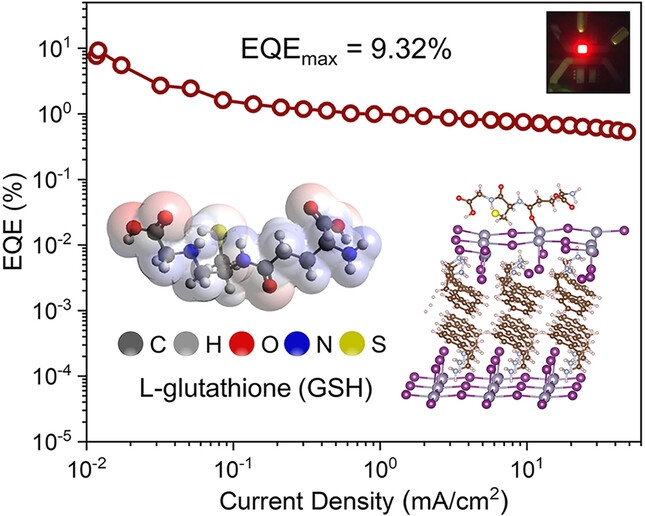
The performance of eco-friendly PEA2SnI4 perovskite light-emitting diodes (PeLEDs) lags far behind that of lead-based PeLEDs. We demonstrated a ligand engineering strategy that uses GSH as a surface ligand to strongly interact with I− and Sn2+ in perovskites, which thus reduces the film crystallization rate and suppresses the oxidation of Sn2+ ions. Pure red PeLEDs based on the modified PEA2SnI4 achieve a record EQEmax of 9.32 %.
Supramolecular Polymers
Three-Component Multiblock 1D Supramolecular Copolymers of Ir(III) Complexes with Controllable Sequences
- First Published: 31 October 2023
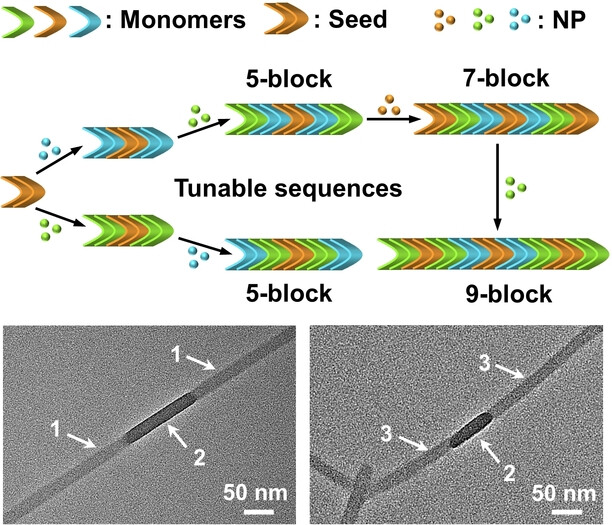
Three-component multiblock 1D supramolecular copolymers with up to 9 blocks have been successfully synthesized by precise control of the pathway complexity of Ir(III) complexes. The segmented structures of the multiblock copolymers could be characterized by both TEM and SEM. These three-component block copolymers with tunable block sequences will advance the development of functional block copolymers.
Solar Cells | Very Important Paper
Parallel Planar Heterojunction Strategy Enables Sb2S3 Solar Cells with Efficiency Exceeding 8 %
- First Published: 31 October 2023

An easily solution-processed parallel planar heterojunction (PPHJ) strategy boosts the efficiency of Sb2S3 solar cells up to 8.32 %, by integrating the distinctive structures of Sb2S3 layer and the duplexity of CH3NH3PbI3 layer in charge transportation. The PPHJ device consists of the conventional planar heterojunction (PHJ) subcells in a parallel connection, but eliminates the normal complexity in both tandem and parallel tandem PHJ systems.
Uranium Chemistry | Very Important Paper
Experimental and Computational Studies on Uranium Diazomethanediide Complexes
- First Published: 26 October 2023
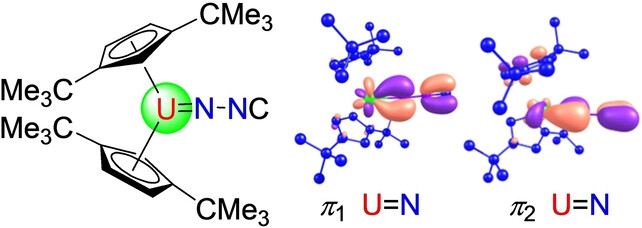
In this contribution, the synthesis, structure, and reactivity of metal (uranium) diazomethanediide complexes containing bridging and/or terminal isocyanoimido groups (U=NNC) are presented. By a combined experimental and computational study, unique reactivity patterns were identified and this gained knowledge provides the first insights into the reactivity of complexes containing a metal isocyanoimido (M=NNC) fragment.
Peptides
Electrochemical Modification of Polypeptides at Selenocysteine
- First Published: 11 October 2023

An electrochemical selenoetherification (e-SE) methodology that enables efficient and selective functionalization of polypeptides is described. e-SE employs mild reaction conditions to facilitate the formation of stable selenoether-linked conjugates through contraction of diselenide bonds. Compatibility with diverse functionalities and complex cargoes is demonstrated through assembly of valuable bioactive polypeptide conjugates.
Click Chemistry | Very Important Paper
Glutathione Mediates Control of Dual Differential Bio-orthogonal Labelling of Biomolecules
- First Published: 31 October 2023
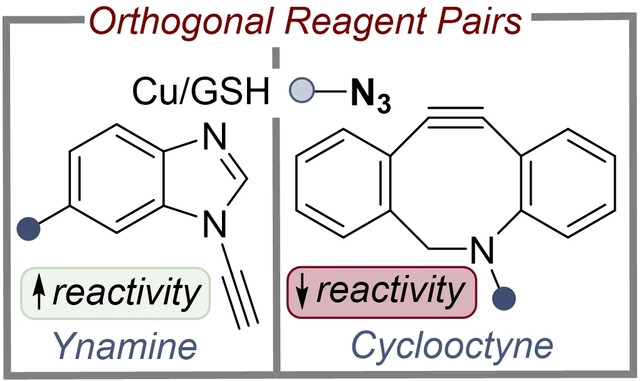
The chemical modification at precise sites within biomolecules is essential to assist in understanding their function. The incorporation of bio-orthogonal reactive groups provides a strategy for selective tagging, however cross-reactivity is problematic when dual modification is required. Glutathione (GSH) is used to control the reactivity of ynamine and cyclooctyne reagents in sequential (3+2) cycloaddition reactions.
Photocatalysis | Hot Paper
Rapid Charge Transfer Endowed by Interfacial Ni-O Bonding in S-scheme Heterojunction for Efficient Photocatalytic H2 and Imine Production
- First Published: 31 October 2023
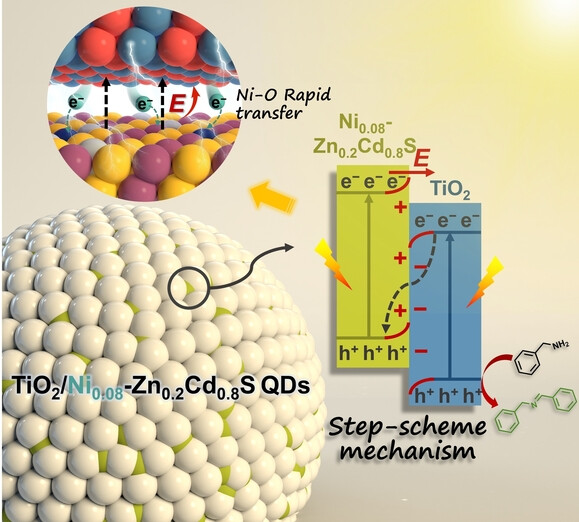
Nickel doping introduces spin-polarized electrons and weakens H−S bonds, resulting in enhanced H2 production. Moreover, the interfacial Ni−O bond significantly strengthens the built-in electric field (E) and reduces the energy barrier. Benefiting from doping and S-scheme heterojunction engineering, TiO2/Ni0.08-Zn0.2Cd0.8S quantum dots (QDs) show good charge transfer and separation, leading to improved H2 production and benzylamine oxidation.
Coordination Chemistry
Lewis Acid Supported Nickel Nitrenoids
- First Published: 13 October 2023
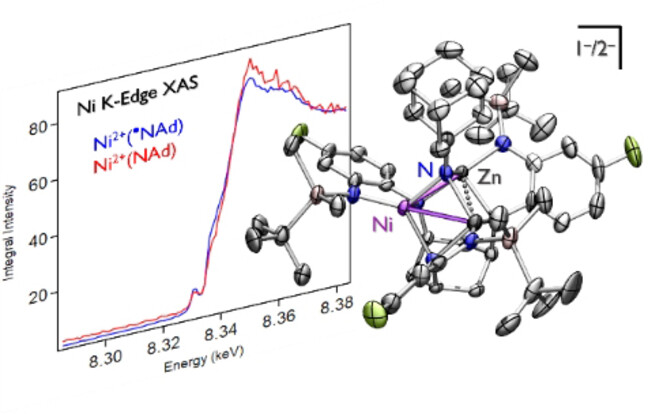
Stepwise metalation of a polynucleating ligand generated heterobimetallic clusters featuring two redox inactive Lewis acids (Zn2+) and one transition metal (Ni). Reduction of the [Zn2Ni] cluster and reaction with a nitrene transfer reagent yielded [K(THF)3][(F,tbsL)Zn2Ni(μ3-NAd)]. Ni K-edge XAS (X-ray absorption spectroscopy) studies support the assignment of the primary redox pair as a divalent nickel coupled to an imidyl ligand.
Electrochemistry
Unraveling the Solvent Effect on Solid-Electrolyte Interphase Formation for Sodium Metal Batteries
- First Published: 26 October 2023
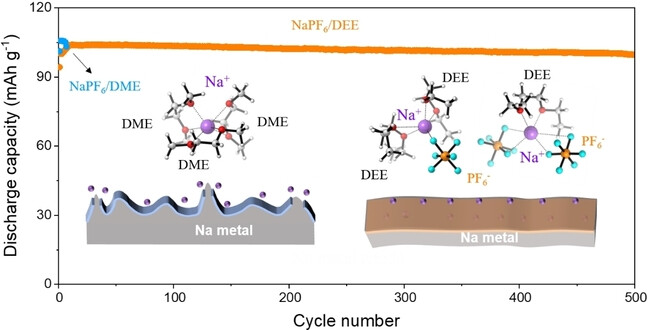
The 1,2-diethoxyethane (DEE) molecule promotes the moderate Na+-DEE coordination, thus leading to the uniform and inorganic-rich solid electrolyte interphase, as proved by the cryogenic electron microscopy characterizations. Consequently, the Na metal anode is highly stable in the NaPF6/DEE-based electrolyte with a high Coulombic efficiency of 99.9 % and dendrite-free deposition behavior.
Permselective Membranes
Crystallizing Self-Standing Covalent Organic Framework Membranes for Ultrafast Proton Transport in Flow Batteries
- First Published: 27 October 2023
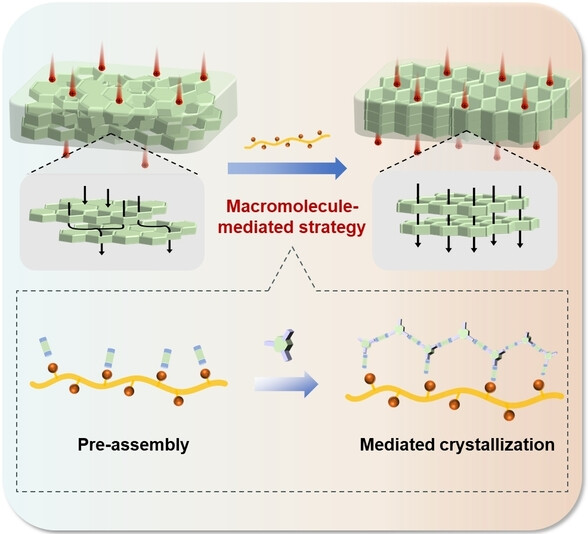
A self-standing COF membrane was prepared for ultrafast proton conduction in flow battery. The −SO3H groups in macromolecule chains offer sites to interact with the precursors of COF and function as long-range ordering growing template to enhance the crystallinity of self-standing COF membrane. Well-defined channels of COF membranes promised high proton conductivity and excellent battery performance.
Analytical Methods | Hot Paper
Glycan Metabolic Fluorine Labeling for In Vivo Visualization of Tumor Cells and In Situ Assessment of Glycosylation Variations
- First Published: 29 October 2023
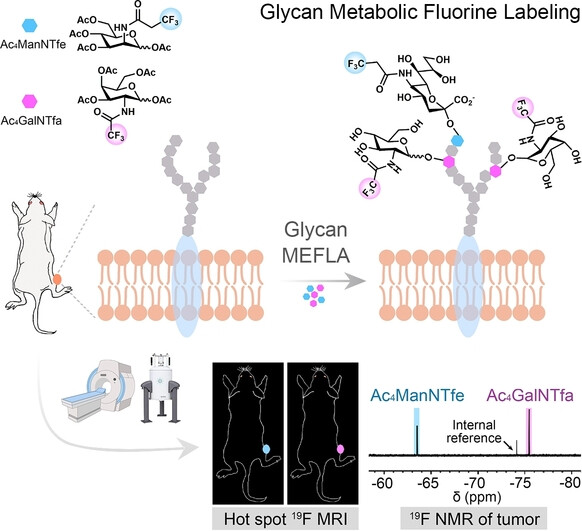
We developed a strategy called glycan MEtabolic Fluorine LAbeling (glycan MEFLA) for selectively tagging glycans of tumor cells. It allows for efficient and selective labeling of tumor cells by fluorinated monosaccharide-based probes (Ac4ManNTfe and Ac4GalNTfa), enabling in vivo visualization of tumor cells and in situ assessment of glycosylation changes via 19F MRI with high sensitivity and deep penetration.
Photothermal Reduction
Non-Interacting Ni and Fe Dual-Atom Pair Sites in N-Doped Carbon Catalysts for Efficient Concentrating Solar-Driven Photothermal CO2 Reduction
- First Published: 30 October 2023
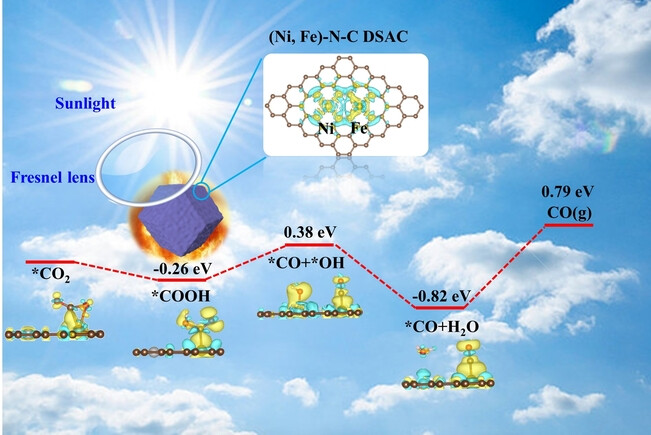
A Ni−Fe dual-single-atom catalyst (DSAC) with adjacent Ni−N4 and Fe−N4 pair sites was developed for concentrating solar-driven photothermal CO2 reduction. This work demonstrated that constructing an appropriate distance between Ni and Fe atoms via an N-bridged Ni−N−N−Fe configuration was conducive to the main *COOH and *HCO3 dissociation processes for solar-driven photothermal CO2 reduction.
Bioorthogonal Catalysis
A Gene-Editable Palladium-Based Bioorthogonal Nanoplatform Facilitates Macrophage Phagocytosis for Tumor Therapy
- First Published: 26 October 2023
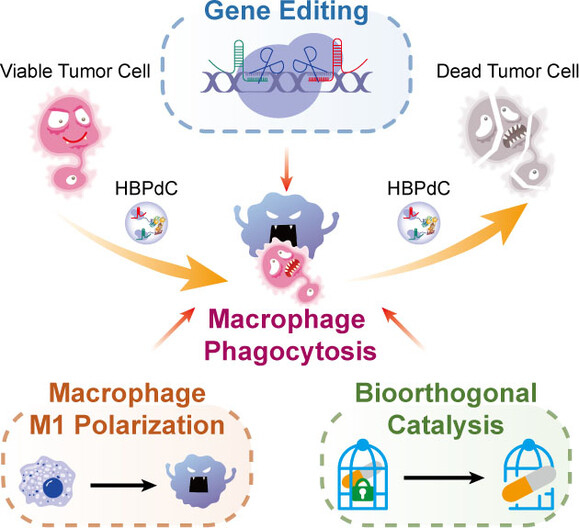
A gene-editable palladium-based bioorthogonal nanoplatform was developed to improve tumor management, which can polarize macrophages to the anti-tumoral M1 phenotype, reprogram tumor cells to suppress anti-phagocytic signals, and induce the activation of sequestered prodrugs through bioorthogonal catalysis, thereby facilitating macrophage phagocytosis and allowing for more effective tumor treatment.
Prodrugs
Core-Shell Reactor Partitioning Enzyme and Prodrug by ZIF-8 for NADPH-Sensitive In Situ Prodrug Activation
- First Published: 26 October 2023

A novel core–shell reactor partitioning CYP450 and prodrug by ZIF-8 is proposed to improve the efficacy, selectivity, and safety of enzyme-prodrug therapy. Here, cytochrome P450 (CYP450) is immobilized in ZIF-8, and the antitumor drug dacarbazine (DTIC) is coordinated and deposited in its outer layer, leading to a high drug loading capacity of 43.6±0.8 %. This reactor exhibits NADPH-sensitive in situ prodrug activation specificity in tumor cells, which achieves high prodrug conversion efficiency of 36.5±1.5 %.
Solar Cells
Inhibiting Ion Migration Through Chemical Polymerization and Chemical Chelation Toward Stable Perovskite Solar Cells
- First Published: 25 October 2023
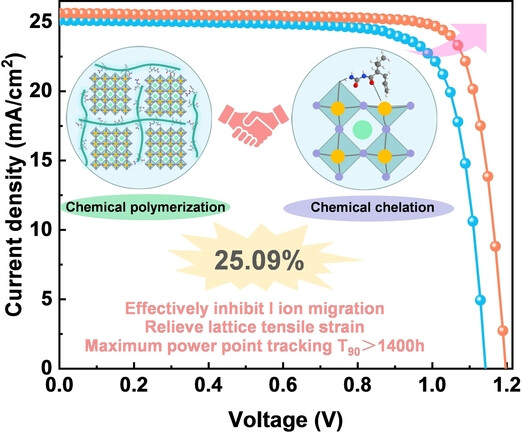
A polymerizable organic molecule monomer, N-carbamoyl-2-propan-2-ylpent-4-enamide (Apronal), is introduced into the perovskite precursor to form a polymer (P-Apronal) through thermal crosslinking, which can effectively interact with shallow defects, leading to enhance crystallinity and reduced lattice strain, especially inhibiting the migration of I−, thus resulting in enhanced long-term stability and performance of devices.
Fused Heterocycles
Increasing Chemical Diversity of B2N2 Anthracene Derivatives by Introducing Continuous Multiple Boron-Nitrogen Units
- First Published: 24 October 2023

A synthetic approach has been developed to introduce multiple main group heteroatoms at the zigzag edge of the anthracene framework. BN annulation has led to a naphthalene derivative with an NBO bond. A subsequent BO annulation has been used to extend the fused aromatic ring to afford an anthracene derivative featuring an NBOB system. Changing the NBOB to an NBNB system has further increased the chemical diversity.
All-solid-state Batteries
High-Entropy Lithium Argyrodite Solid Electrolytes Enabling Stable All-Solid-State Batteries
- First Published: 30 October 2023
Solar Cells
Low-Cost Fully Non-fused Ring Acceptor Enables Efficient Organic Photovoltaic Modules for Multi-Scene Applications
- First Published: 25 October 2023

A fully non-fused ring acceptor, GS60, is synthesized to improve photostability and reduce material costs in Organic Solar Cells. By blending with non-fused ring polymer, PTVT−T, the obtained active layers possess favorable morphology and suppressive charge recombination. Encouragingly, manufactured large-area organic photovoltaic modules exhibit outstanding photostability and power conversion efficiency under various light conditions.
High-Pressure Fabrication of Binary Organic Solar Cells with High Molecular Weight D18 Yields Record 19.65 % Efficiency
- First Published: 26 October 2023
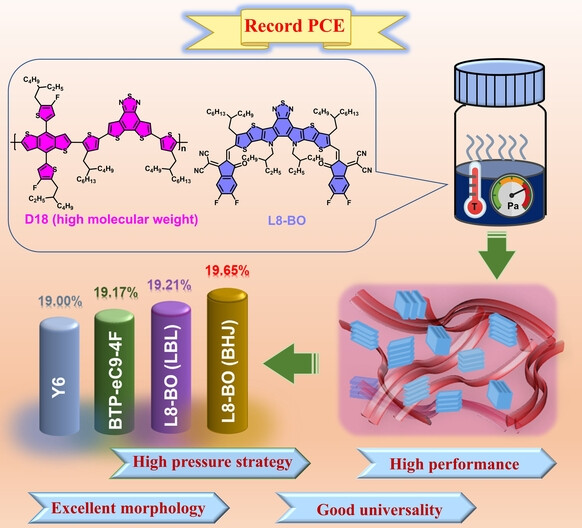
Inspired by pressure cooker principles, we employ high-pressure methods to address challenges in processing high molecular weight polymers. Successfully dissolving HW-D18 in chloroform at 100 °C within pressure vials, heightened vapor pressure elevates boiling point and solubility of chloroform. This enables the creation of blend films with superior properties, ultimately achieving an excellent PCE of 19.65 %, setting a new record for binary OSCs.
CO2 Hydrogenation
Directly Knitted Hierarchical Porous Organometallic Polymer-Based Self-Supported Single-Site Catalyst for CO2 Hydrogenation in Water
- First Published: 24 October 2023

A hierarchical porous hyper-crosslinked organometallic polymer containing Ir-abnormal NHC-based single-site molecular catalyst centers was designed and developed for CO2 hydrogenation-to-formate salt production in water that delivered an extremely high single-run TON of 50816, and excellent reusability with a cumulative TON of 285400 in 10 cycles with just 1.6 % activity loss/cycle.
Chiral Allenes
Heterogeneous Copper-Catalyzed Cross-Coupling for Sustainable Synthesis of Chiral Allenes: Application to the Synthesis of Allenic Natural Products
- First Published: 29 October 2023

A highly efficient and stereospecific cross-coupling of propargylic mesylates and Grignard reagents for the synthesis of diverse chiral allenes catalyzed by a recyclable heterogeneous nanocopper catalyst is reported. The synthetic utility of this sustainable methodology was further demonstrated by its application to the asymmetric total synthesis of 5 valuable allenic natural products.
Upconversion | Hot Paper
Symmetry and Rigidity for Boosting Erbium-Based Molecular Light-Upconversion in Solution
- First Published: 17 October 2023
N-Heterocyclic Olefins | Hot Paper
N-Heterocyclic Olefins on a Silicon Surface
- First Published: 17 October 2023

The binding of N-heterocyclic olefins to a silicon surface is investigated revealing an adsorption in the ylide form drastically depending on the N-substituents. Large N-substituents lead to upright molecules and ordered monolayers while for small N-substituents a flat-lying geometry is favored. The geometry is found to have a strong influence on the properties of the films, e.g. their work function.
Solar Cells
Nucleation and Crystallization in 2D Ruddlesden-Popper Perovskites using Formamidinium-based Organic Semiconductor Spacers for Efficient Solar Cells
- First Published: 25 October 2023
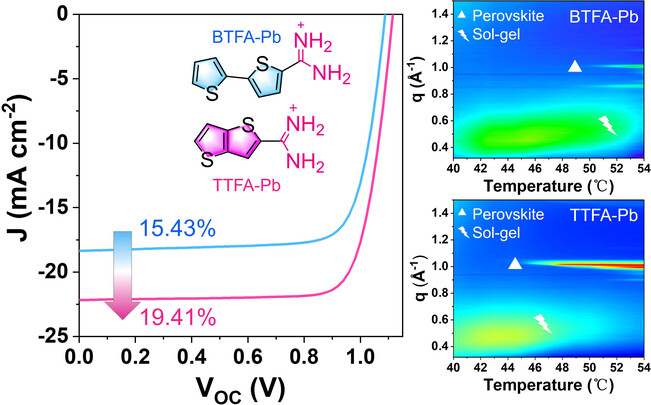
Two formamidinium (FA)-based semiconductor spacers, namely TTFA and BTFA, respectively, were successfully developed for two-dimensional (2D) Ruddlesden-Popper perovskite solar cells. The nucleation and crystallization kinetics of 2D perovskite films were systematically investigated and understood using in situ optical microscopy and in situ grazing incidence wide-angle X-ray scattering measurements. The device based on (TTFA)2MAn−1PbnI3n+1 (n=5) achieved a record efficiency of 19.41 %.
Asymmetric Catalysis
Ni-Catalyzed Regio- and Enantioselective Homoallylic Coupling: Synthesis of Chiral Branched 1,5-Dienes Featuring a Quaternary Stereogenic Center and Mechanistic Analysis
- First Published: 06 November 2023
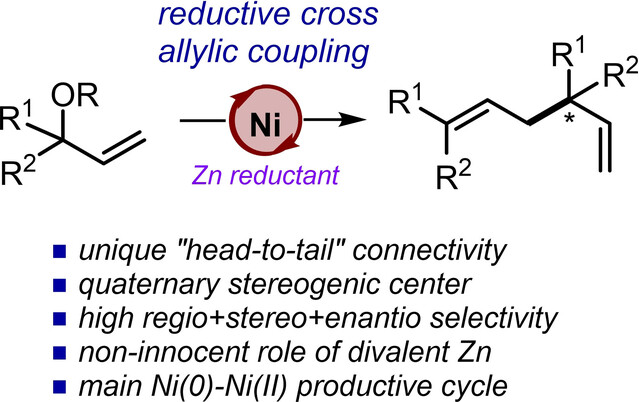
A reductive cross-electrophile coupling of allylic carbonates under Ni-catalysis provides access to unique 1,5-dienes featuring a quaternary stereogenic center under high chemo-, regio-, diastereo- and enantio-control. Mechanistic studies align well with a catalytic cycle based on a Ni(0)/Ni(II) couple with a crucial role for divalent Zn boosting the overall kinetics and selectivity while favoring a key bimetallic C−C bond formation.
Gold Nanoparticles
Luminescent Gold Nanoparticles with Discrete DNA Valences for Precisely Controlled Transport at the Subcellular Level
- First Published: 06 November 2023

We developed a facile in situ strategy to precisely control DNA aptamer valences on the surface of luminescent gold nanoparticles (AuNPs) with emission in the second near-infrared window and further demonstrated that not only the tumor-targeting efficiencies but also the subcellular transport of AuNPs show precise valence dependence.
Helicenes
Synthesis of Closed-Heterohelicenes Interconvertible between Their Monomeric and Dimeric Forms
- First Published: 26 October 2023

The oxidation of closed-[7]helicenes with [bis(trifluoroacetoxy)iodo]benzene gave the corresponding dimers connected at the β-positions of the pyrrole units through a remarkably elongated C−C bond of about 1.60 Å. Homolytic bond dissociation took place upon UV irradiation to reform its monomeric form. The interconversion between monomeric and dimeric forms is associated with a turn-on of circularly polarized luminescence.
Polyoxometalates | Hot Paper
Hydrogenation Catalysis by Hydrogen Spillover on Platinum-Functionalized Heterogeneous Boronic Acid-Polyoxometalates
- First Published: 27 October 2023
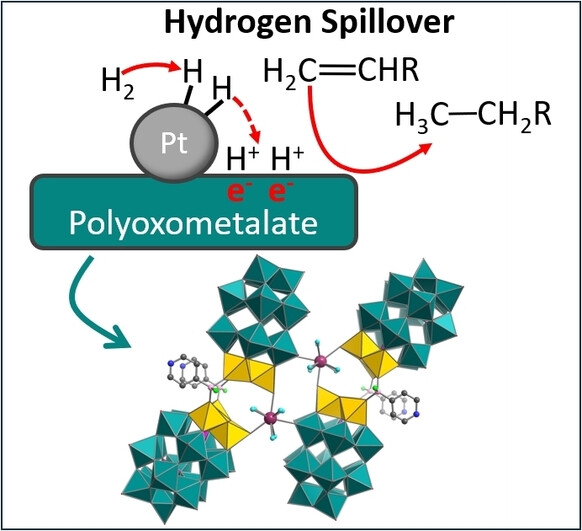
Supramolecular colloids based on polyoxometalates functionalized with boronic acids are modified with Pt particles to yield high-performance hydrogenation catalysts. Mechanistic studies reveal that the systems operate by a hydrogen spillover mechanism, enabling efficient hydrogenation of olefins to alkanes and nitroarenes to amines under mild conditions.
Photochemistry | Very Important Paper
A Single-Enantiomer Emitter Enabled Superstructural Helix Inversion for Upconverting and Downshifting Luminescence with Bidirectional Circular Polarization
- First Published: 30 October 2023
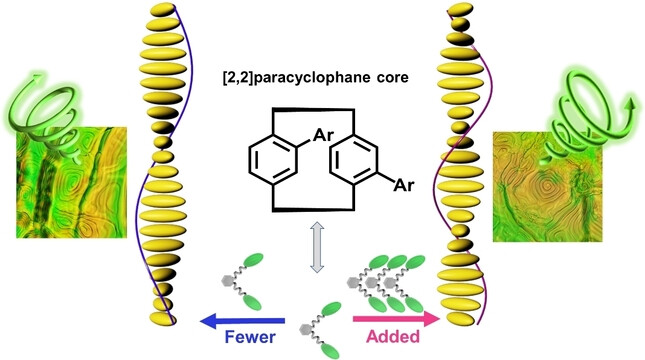
A single chiral emitter can induce the reversal of the cholesteric helix direction at a macroscopic level through a concentration-dependent effect at the molecular scale. This exceptional capacity endows the system with the extraordinary ability to seamlessly toggle the sign of circularly polarized luminescence, thus bestowing unparalleled mastery over the upconversion/downshift processes associated with the donor and acceptor moieties.
Imaging
T Cell Antigen Recognition and Discrimination by Electrochemiluminescence Imaging
- First Published: 30 October 2023
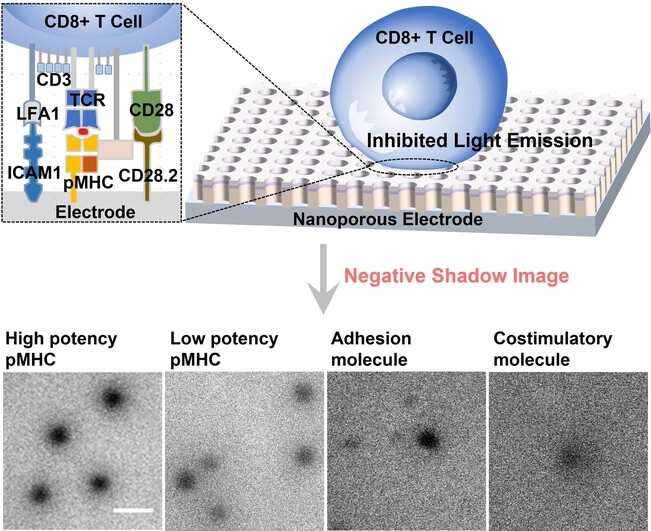
We report a label-free approach for imaging immune synapses of T cells by electrochemiluminescence microscopy, which allows us to discriminate specific T cell receptor (TCR)/peptide-loaded major histocompatibility complex (pMHC) recognition, as well as the role of auxiliary molecules (costimulatory and adhesion molecules). The results would be useful in the development of tumour vaccines and adoptive T cell transfer immunotherapy.
Photocatalysis
Photo-Driven Quasi-Topological Transformation Exposing Highly Active Nitrogen Cation Sites for Enhanced Photocatalytic H2O2 Production
- First Published: 06 November 2023
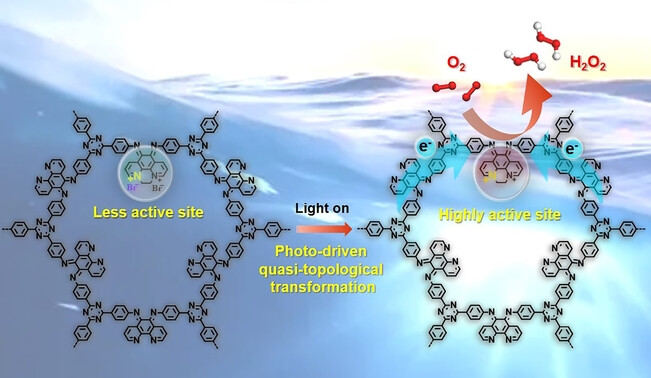
Photo-driven quasi-topological transformation exposing active nitrogen cation sites in a 1,10-phenanthroline-5,6-dione-based triazine-cored COF power continuous and stable charge separation/transfer, broaden visible-light adsorption, and provide strong Lewis acid sites for promoting O2 adsorption. The optimal catalyst showed a high H2O2 yield rate of 11965 μmol g−1 h−1 under visible light irradiation.
Electrochemical CO2 Reduction
Selective CO2 Reduction to Ethylene Mediated by Adaptive Small-molecule Engineering of Copper-based Electrocatalysts
- First Published: 30 October 2023
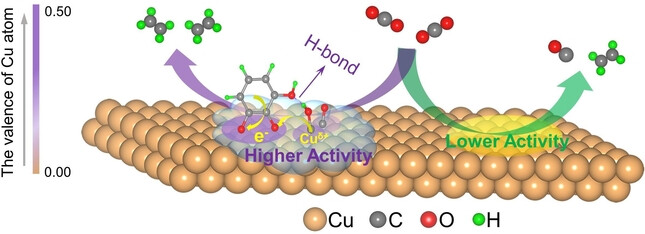
Through in situ tannic acid (TA) molecule regulating the reconstruction of a Cu-based material, CO2 reduction to C2H4 products with a Faraday efficiency (FE) of 63.6 % over 497.2 mA cm−2 was achieved. The excellent performance can be attributed to TA induced adaptive Cuδ+/Cu0 interface is beneficial to lower the energy barrier of C−C coupling, as well as the key COH intermediate stabilized through the hydrogen bond by the hydroxyl group in TA.
Electrochemistry
Electrochemical Nickel-Catalyzed Selective Inter- and Intramolecular Arylations of Cysteine-Containing Peptides
- First Published: 31 October 2023

A practical electrochemical Ni-catalytic system has been developed for selective (hetero)arylation, alkenylation and alkynylation of cysteine-containing peptides. The high functional group compatibility and application to the synthesis of cyclic peptides either by cyclization or stapling demonstrate the potential protocol's utility in medicinal chemistry and chemical biology.
X-ray Detectors | Hot Paper
Dimensional and Optoelectronic Tuning of Lead-free Perovskite Cs3Bi2I9−nBrn Single Crystals for Enhanced Hard X-ray Detection
- First Published: 26 October 2023
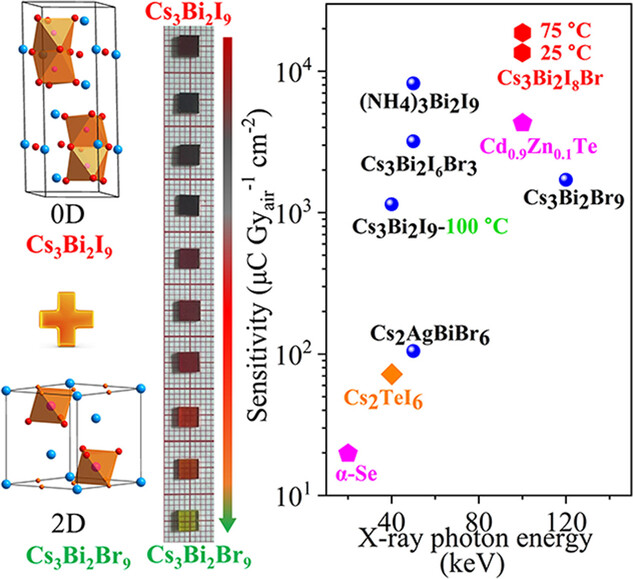
Upon doping bromine into zero-dimensional Cs3Bi2I9 (space group P63/mmc), the crystal structure transforms into a two-dimensional layer structure as the bromine content reaches Cs3Bi2I8Br. At this optimized composition the Cs3Bi2I8Br single crystal has an outstanding detection performance in terms of record sensitivity for 100 keV hard X-rays, ultralow detection limit, and excellent imaging capability at 75 °C.
Zinc Batteries
Localized Anion-Cation Aggregated Aqueous Electrolytes with Accelerated Kinetics for Low-Temperature Zinc Metal Batteries
- First Published: 07 November 2023
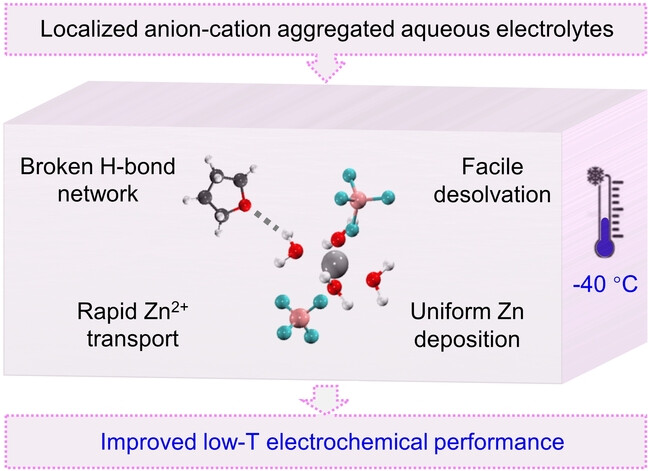
Aqueous electrolytes using Zn(BF4)2 as the salt and THF as the diluent are developed to improve the low-temperature performance of Zn-metal batteries. THF promotes the anion-cation aggregation and disrupts H-bond network, resulting in ZnF2-rich solid-electrolyte interphase and facilitating the desolvation process at low temperatures.
Gas Separation
Synergistic Nitrogen Binding Sites in a Metal-Organic Framework for Efficient N2/O2 Separation
- First Published: 07 November 2023
Positron Emission Tomography
CycloSiFA: The Next Generation of Silicon-Based Fluoride Acceptors for Positron Emission Tomography (PET)
- First Published: 18 October 2023
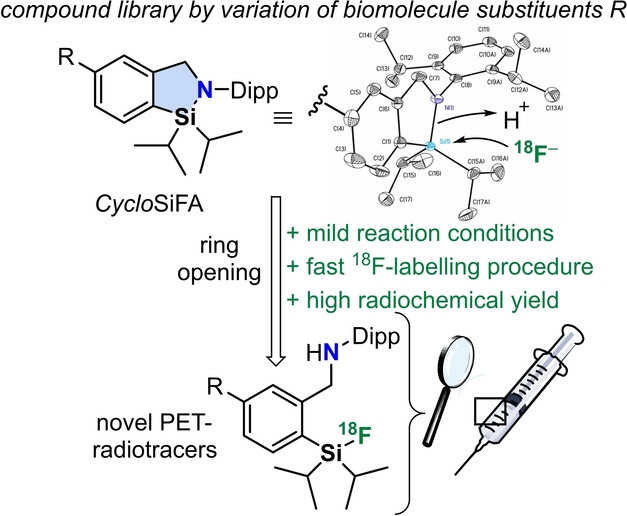
Cyclic azasilole derivatives undergo ring-opening with 18F– anions under mild conditions and with high radiochemical yield. They represent a novel class of Silicon Fluoride Acceptor systems (CycloSiFA) and hold great potential for convenient kit-like labelling procedures in different medicinal applications.
PEM Fuel Cell | Hot Paper
Stability Investigations on a Pt@HGS Catalyst as a Model Material for Fuel Cell Applications: The Role of the Local pH
- First Published: 17 October 2023
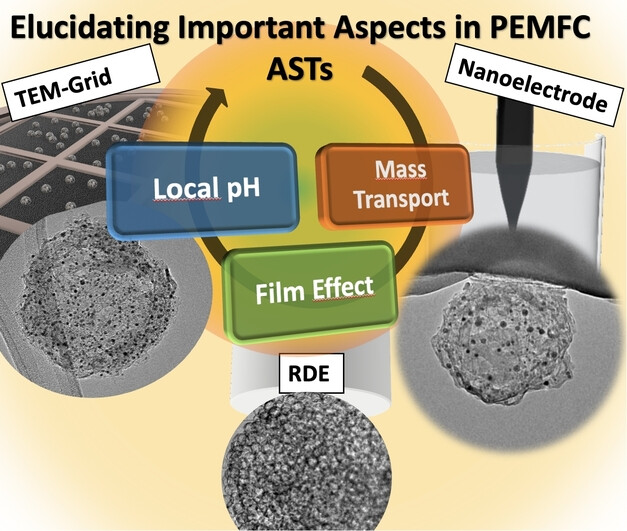
The effect of the oxygen reduction reaction in accelerated stress tests using a Pt@HGS model catalyst on the catalyst degradation is investigated using RDE, IL-STEM grid and single entity electrochemical measurements. We demonstrate the importance of considering the modulation of the local pH when performing accelerated stress tests.
Communications
Protein-POV Adducts
Stabilization and Binding of [V4O12]4− and Unprecedented [V20O54(NO3)]n− to Lysozyme upon Loss of Ligands and Oxidation of the Potential Drug VIVO(acetylacetonato)2
- First Published: 28 September 2023
![Stabilization and Binding of [V4O12]4− and Unprecedented [V20O54(NO3)]n− to Lysozyme upon Loss of Ligands and Oxidation of the Potential Drug VIVO(acetylacetonato)2](/cms/asset/b1a48c45-0a67-4cf5-b6ba-c2f453011616/anie202310655-toc-0001-m.jpg)
The promising anti-diabetic and anti-cancer drug VIVO(acetylacetonato)2 in the presence of lysozyme undergoes ligand exchange, partial or complete oxidation of VIV to VV to give two polyoxidovanadates (POVs): [V4O12]4− and the unprecedented [V20O54(NO3)]n−, based on the unusual [V18O46(NO3)]n− cage. They are stabilized by non-covalent or covalent interactions with the protein.
Liquid-Liquid Phase Separation | Hot Paper
Sequence-Tunable Phase Behavior and Intrinsic Fluorescence in Dynamically Interacting Peptides
- First Published: 07 November 2023
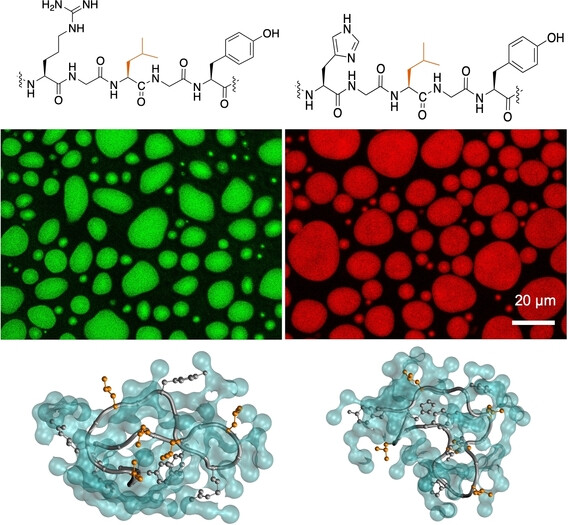
The de-novo rational design of short peptide motifs that assemble into fluorescent condensates with sequence-dependent phase behavior is investigated. Integrating experiments and molecular dynamics (MD) simulations, the role of sidechain solvation, n-π* interactions, and hydrogen bonding are highlighted through systematic sequence variations on an identical peptide backbone scaffold.
Zinc Chemistry | Very Important Paper
Visible Light Responsive Dinuclear Zinc Complex Consisting of Proximally Arranged Two d10-Zinc Centers
- First Published: 27 September 2023
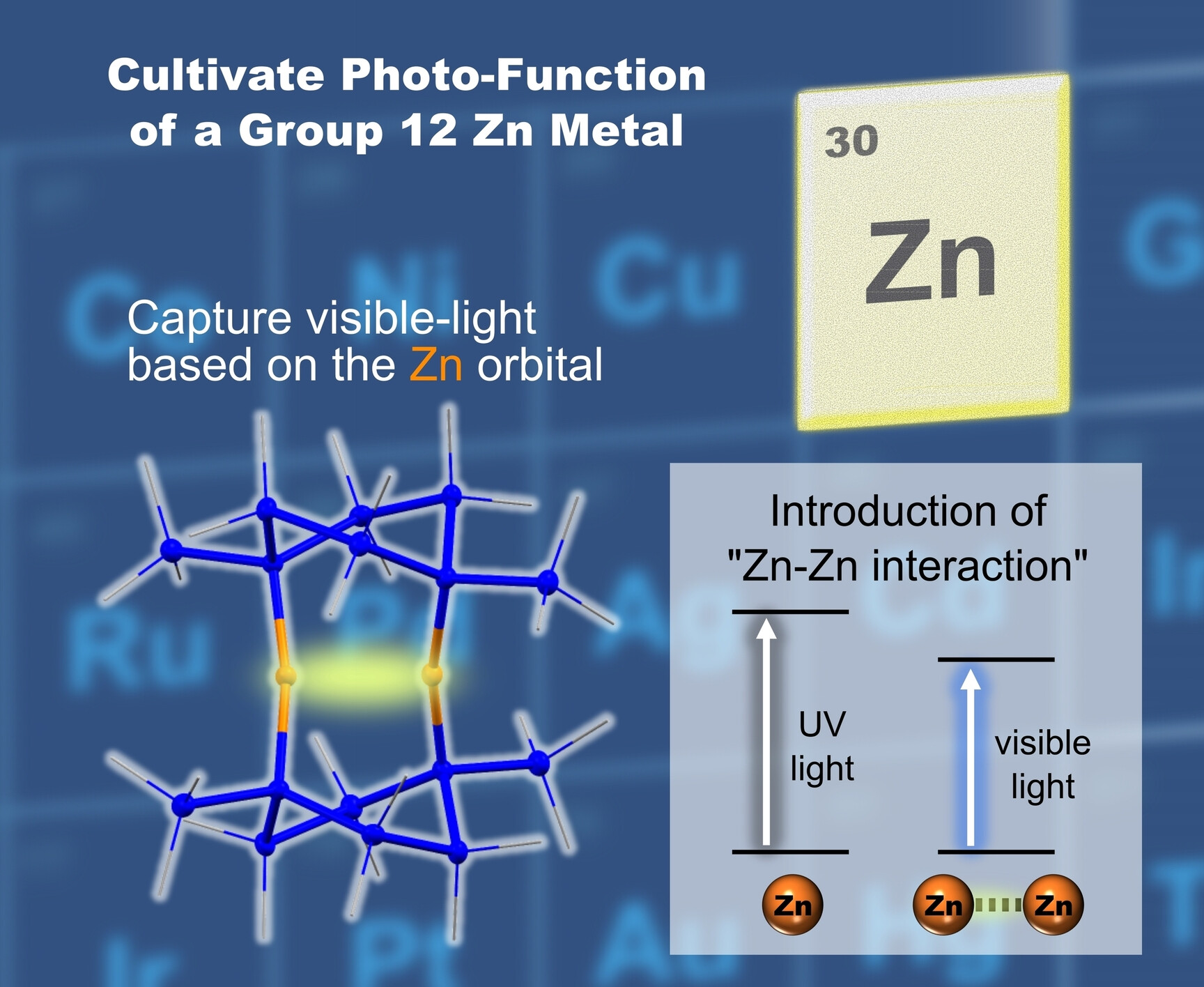
A dinuclear Zn complex showing anomalous visible-light absorption using Zn orbitals is developed. Key to the success of the low-energy absorption is the short distance between coordinatively unsaturated Zn centers, which enables the Zn−Zn orbital interactions to dramatically decrease the energy gap of the complex. Such Zn−Zn interactions facilitate untapped photo-functions of a group 12 Zn metal.
CO2 Electroreduction | Very Important Paper
Favoring CO Intermediate Stabilization and Protonation by Crown Ether for CO2 Electromethanation in Acidic Media
- First Published: 26 October 2023
Two-Dimensional Materials | Hot Paper
Nanoarchitectonics on Electrosynthesis and Assembly of Conjugated Metallopolymers
- First Published: 07 November 2023

We report nanoarchitectonics of end-on conjugated metallopolymers by surface-initiated one-by-one electrochemical addition and assembly of bifunctional monomers with electroactive oxidation and reduction units under alternative positive and negative potentials. Rapid electrosynthesis can be potentially automated as an electrochemically assisted assembly or printing technique while reducing batch-to-batch variability.
Synthetic Methods | Hot Paper
Stereospecific Conversion of Boronic Esters into Enones using Methoxyallene: Application in the Total Synthesis of 10-Deoxymethynolide
- First Published: 25 October 2023
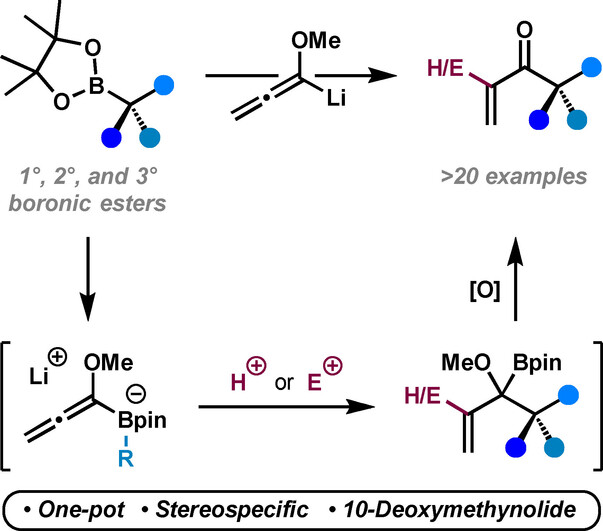
A one-pot strategy for the stereospecific conversion of boronic esters into enones has been developed using methoxyallene as a commercially available, three-carbon building block. The methodology is suitable for primary, secondary, and tertiary boronic esters and has been applied to a 14-step total synthesis of the polyketide 10-deoxymethynolide.
NMR spectroscopy
Solution-State 2D NMR Spectroscopy of Mixtures HyperpolarizedUsing Optically Polarized Crystals
- First Published: 14 October 2023
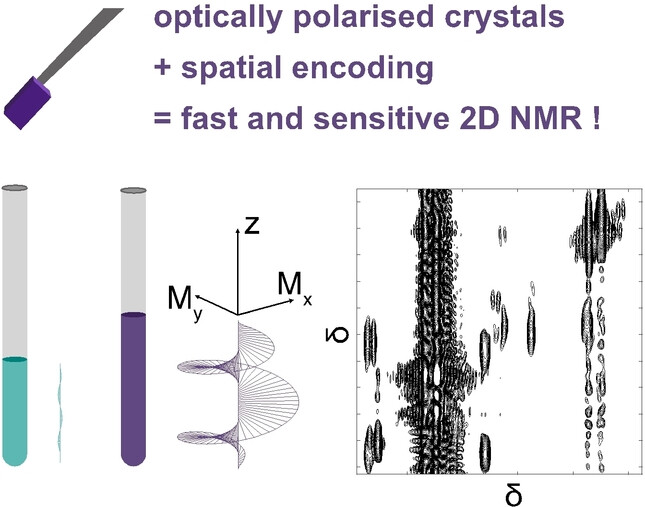
HYPNOESYS (Hyperpolarized NOE System) has recently emerged as a promising approach to enhance the sensitivity of NMR spectroscopy in the solution state. We show that 2D NMR spectra can be obtained from HYPNOESYS-polarized samples, using single-scan acquisition methods, paving the way to a sensitive, information-rich and affordable analytical method.
Synthetic Methods
Palladium-Catalyzed Skeletal Rearrangement of Substituted 2-Silylaryl Triflates via 1,5-C−Pd/C−Si Bond Exchange
- First Published: 07 November 2023

A palladium-catalyzed skeletal rearrangement of 2-(2-allylarylsilyl)aryl triflates has been developed to give tetrahydrophenanthrosiloles via 1,5-C−Pd/C−Si bond exchange. The reaction pathways can be switched by tuning the reaction conditions to give fused dihydrodibenzosilepin derivatives from the same starting materials. The inspection of the reaction conditions revealed the importance of carboxylates in promoting the C−Pd/C−Si bond exchange.
Reactive Sulfur Species | Hot Paper
Synergistic Activation of Nitrite and Thiocarbonyl Compounds Affords NO and Sulfane Sulfur via (Per)thionitrite (SNO−/SSNO−)
- First Published: 19 October 2023

Synergic interactions between nitrite anion and the thiocarbonyl functionality in various biologically relevant stable organosulfur motifs are shown to result in the formation of sulfane sulfur (S0) as well as NO gas. Spectroscopic investigations unequivocally suggest the involvement of metastable (per)thionitrite (SNO−/SSNO−) species.
Lithium-Ion Batteries
Irreparable Interphase Chemistry Degradation Induced by Temperature Pulse in Lithium-Ion Batteries
- First Published: 06 November 2023
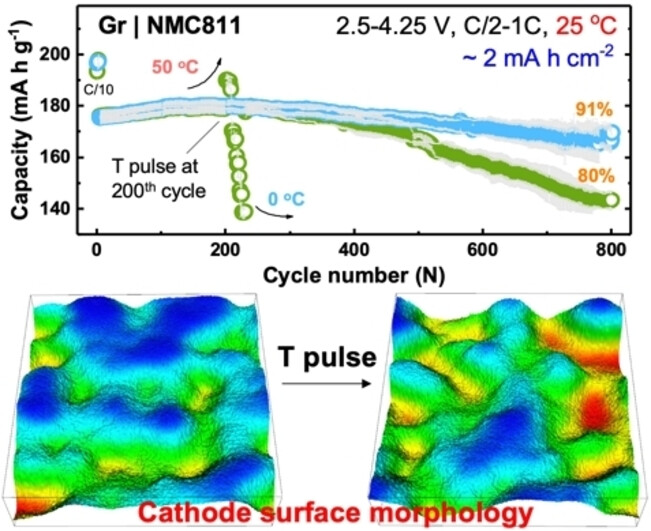
A sudden operating temperature change (T pulse) results in a faster capacity fade of graphite|LiNi0.8Mn0.1Co0.1O2 (Gr|NMC811) pouch full cells. Comprehensive post-mortem analyses unveil that the T pulse mainly causes a deterioration of cathode-electrolyte interphase architecture and chemistry, which in turn accelerates anode-electrolyte interphase degradation due to aggregated chemical crossover from the cathode during long-term cycling.
Solid-State Chemistry
Combining Nitridoborates, Nitrides and Hydrides—Synthesis and Characterization of the Multianionic Sr6N[BN2]2H3
- First Published: 31 October 2023
![Combining Nitridoborates, Nitrides and Hydrides—Synthesis and Characterization of the Multianionic Sr6N[BN2]2H3](/cms/asset/42b8df5a-35e3-4c7a-a064-e795dd21f049/anie202313564-toc-0001-m.jpg)
The novel strontium nitridoborate hydride Sr6N[BN2]2H3 was obtained by a solid-state synthesis, extending the family of multinary hydrides. Single-crystal X-ray and neutron powder diffraction data revealed the crystal structure containing nitridoborate, nitride and hydride anions. Impedance spectroscopy shows hydride ion conductivity and MAS NMR as well as vibrational spectroscopy corroborate the structural analysis of our compound.
Silicon Ligands
Neutral and Anionic Square Planar Palladium(0) Complexes Stabilized by a Silicon Z-Type Ligand
- First Published: 29 October 2023
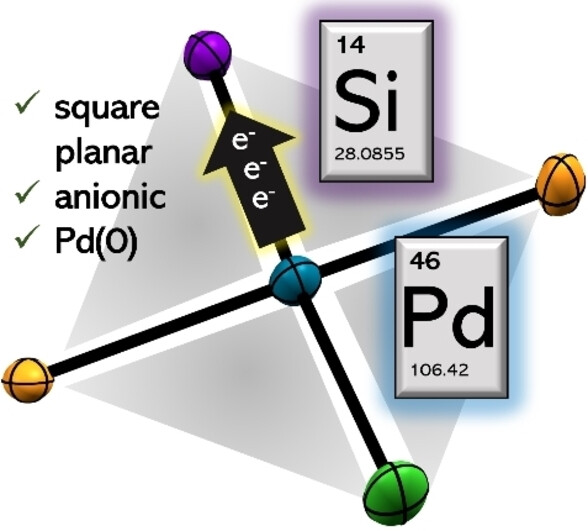
The first neutral and anionic square planar (sp) Pd(0) (ate) complexes are synthesized and fully characterized. Such species, which have been proposed as intermediates in Pd-catalyzed cross coupling reactions, are stabilized using a Si(IV) based Lewis acidic ambiphilic Z-type ligand, which causes a strong Pd−Si Z-type interaction as confirmed by DFT derived methods.
Photochemistry
Microwave-Responsive Flexible Room-Temperature Phosphorescence Materials Based on Poly(vinylidene fluoride) Polymer
- First Published: 26 October 2023
Tip-Enhanced Raman Spectroscopy | Hot Paper
Chemical Imaging of RNA-Tau Amyloid Fibrils at the Nanoscale Using Tip-Enhanced Raman Spectroscopy
- First Published: 31 October 2023
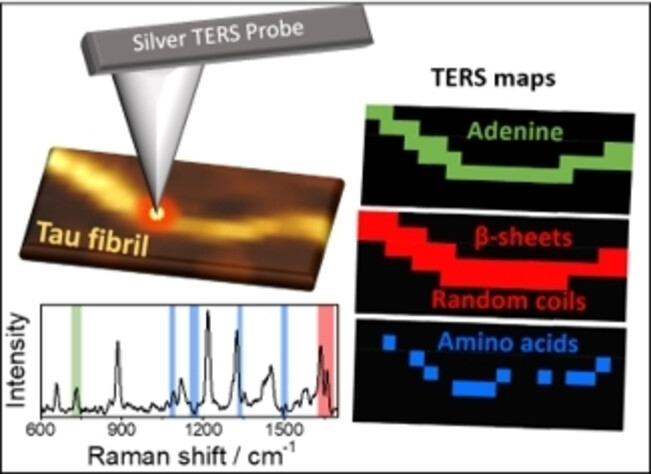
Tip-enhanced Raman spectroscopy (TERS) is used to map polyadenosine (polyA)-induced tau fibrils with nanoscale spatial resolution. It proves that polyA lies on the surface of the fibril core β-sheets but remains wrapped by the random-coiled fuzzy coat. TERS also shows the colocalization of positively charged amino acids with the anionic polyA cofactor, which is an important step to clarify the role of RNA cofactors in the fibril formation.
NMR Spectroscopy
Single-Scan Ultraselective NMR Experiments with Preserved Sensitivity
- First Published: 25 October 2023
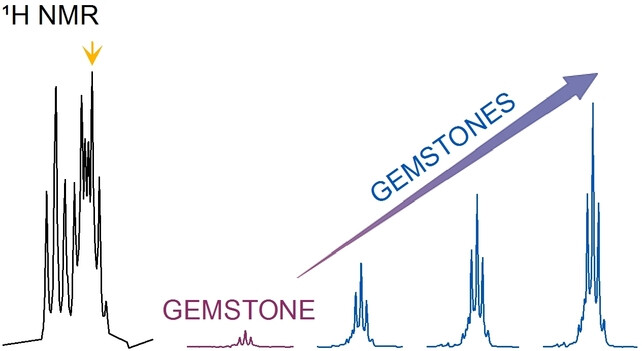
Single-scan ultraselective experiments, based on the GEMSTONE (gradient-enhanced multiplet-selective targeted-observation NMR experiment) element, are a powerful approach to extract detailed information from complex NMR spectra. We describe an approach allowing to dramatically reduce signal losses due to translational diffusion, for applications to structure elucidation and mixture analysis.
Helical Polymers | Very Important Paper
A Subtle Change in the Flexible Achiral Spacer Does Matter in Supramolecular Chirality: Two-Fold Odd-Even Effect in Polymer Assemblies
- First Published: 30 October 2023
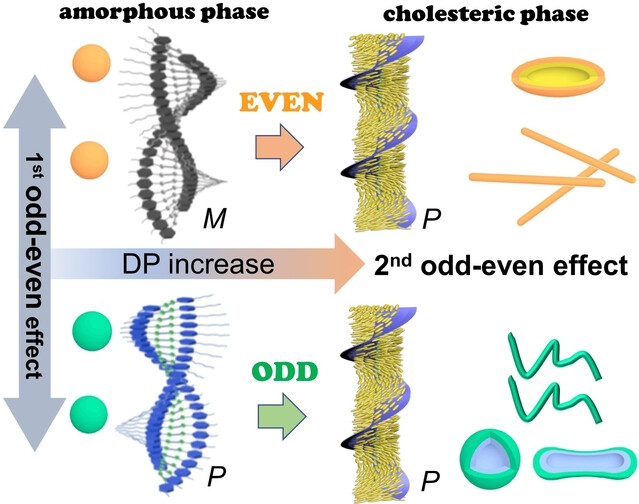
Negligible changes of flexible spacers enable remarkable change of supramolecular chirality and anisotropic topology in azobenzene polymer assemblies. The phase transition from amorphous to LC phase can cause the chiroptical inversion in supramolecular assemblies, leading to two types of chiral arrangements with opposite helicity.
Gas Sensing | Hot Paper
Crystal Engineering of BiVO4 for Photochemical Sensing of H2S Gas at Ultra-low Concentration
- First Published: 07 November 2023
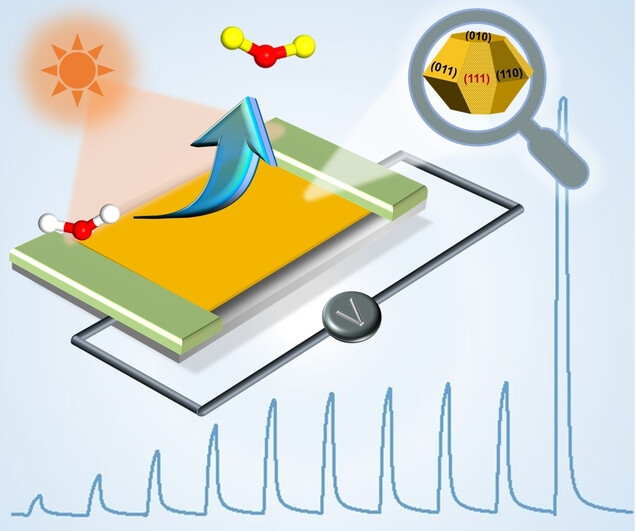
Octadecahedron BiVO4, which was obtained by facet engineering, was employed as a photochemical sensing material for the selective detection of H2S at an ultralow concentration due to its larger proportion of (110) and (011) facets as well as the formation of the additional (111) facets. The insights into the interaction between H2S and BiVO4 under photoactivation were investigated.
Metal-Organic Cages | Very Important Paper
A Self-Assembled Capsule for Propylene/Propane Separation
- First Published: 26 October 2023

A water-soluble tetrahedral Fe4L6 metal-organic cage has been successfully used to separate propane and propylene under ambient conditions. Mixed gases of C3H6 and C3H8 were captured by Fe4L6 at the gas-liquid interface in a U-shaped glass tube. Governed by the guest binding affinity, C3H6 is released first after transport of the gases to the receiving arm of the tube.
Organic Chemistry
Nickel-Catalyzed Enantioselective Decarboxylative Acylation: Rapid, Modular Access to α-Amino Ketones
- First Published: 08 November 2023
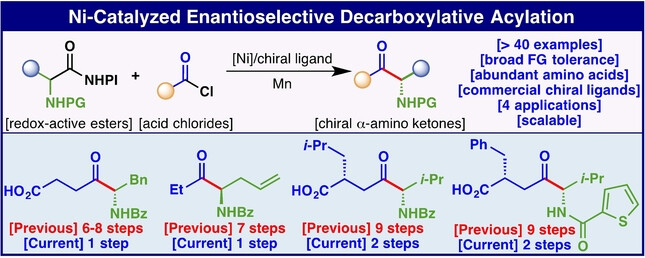
A new approach to the enantiocontrolled synthesis of α-amino ketone derivatives is disclosed by employing a nickel-catalyzed decarboxylative acylation strategy. Starting from readily available acyl chlorides and α-amino acids-derived redox-active esters, the reaction exhibits broad substrate scope, easy scalability, and is applied to dramatically simplify the synthesis of several known structures.
Phosphorescence | Very Important Paper
Naphthyl Substituted Impurities Induce Efficient Room Temperature Phosphorescence
- First Published: 31 October 2023
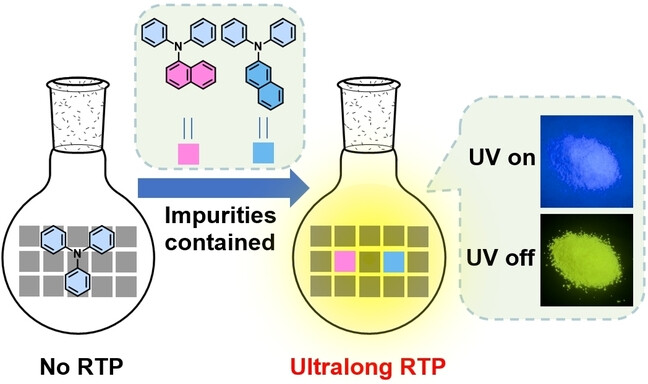
The origin of yellow-green room temperature phosphorescence (RTP) of triphenylamine from commercial sources has been clarified for the first time, which inspires a general and convenient approach to construct bicomponent host/guest organic RTP materials, that is, doping naphthyl substituted analogues into the host molecule.




